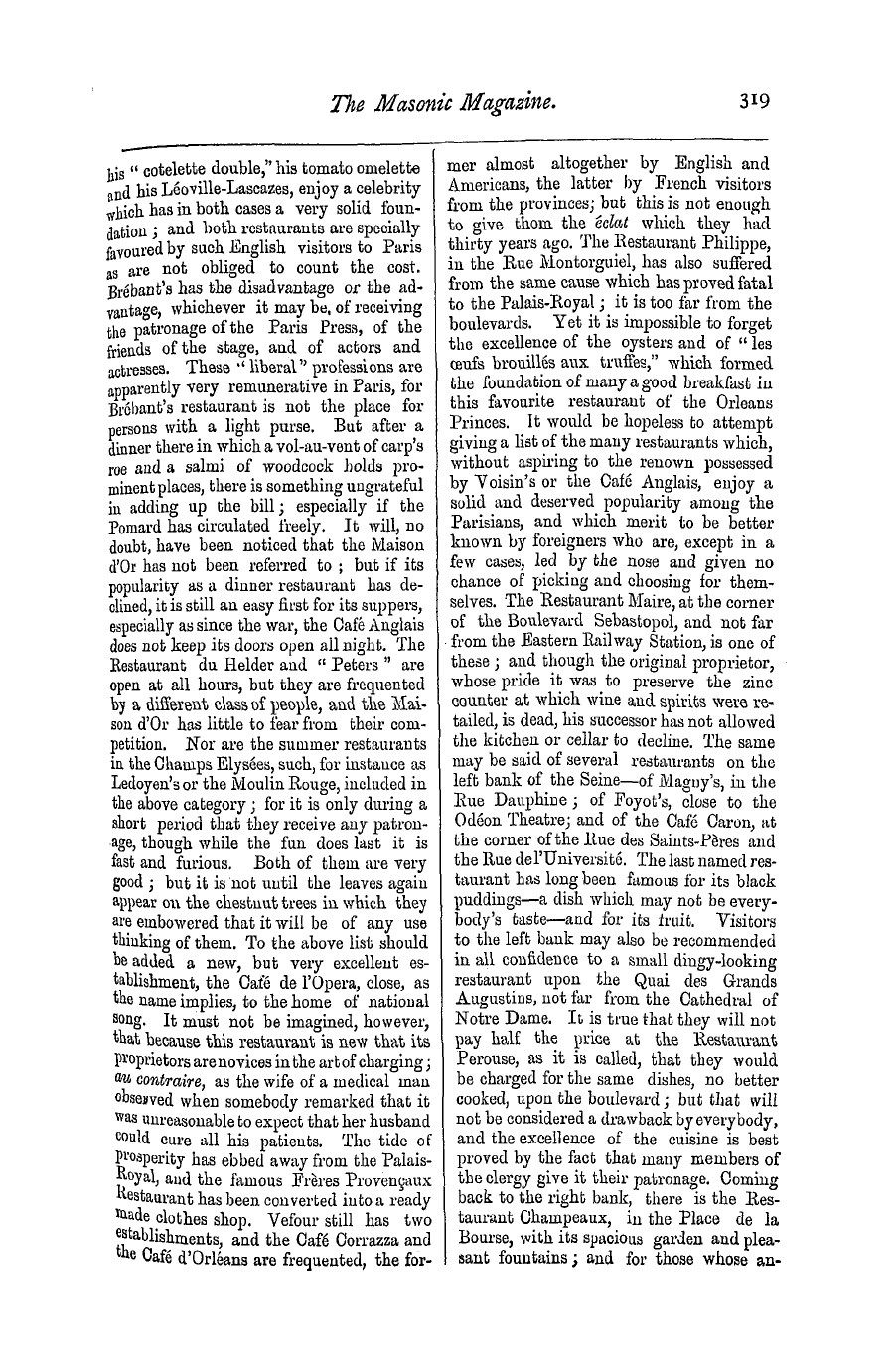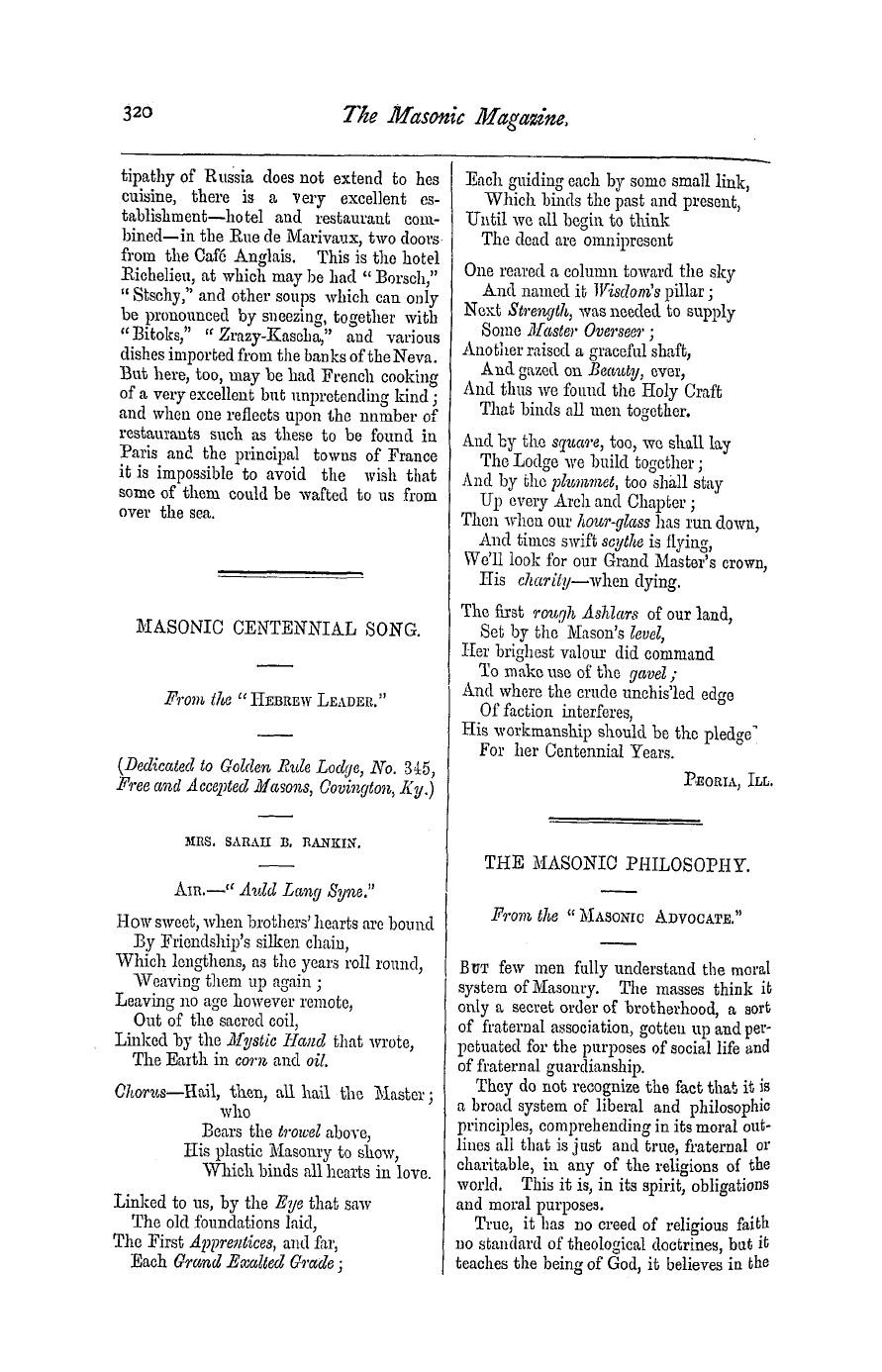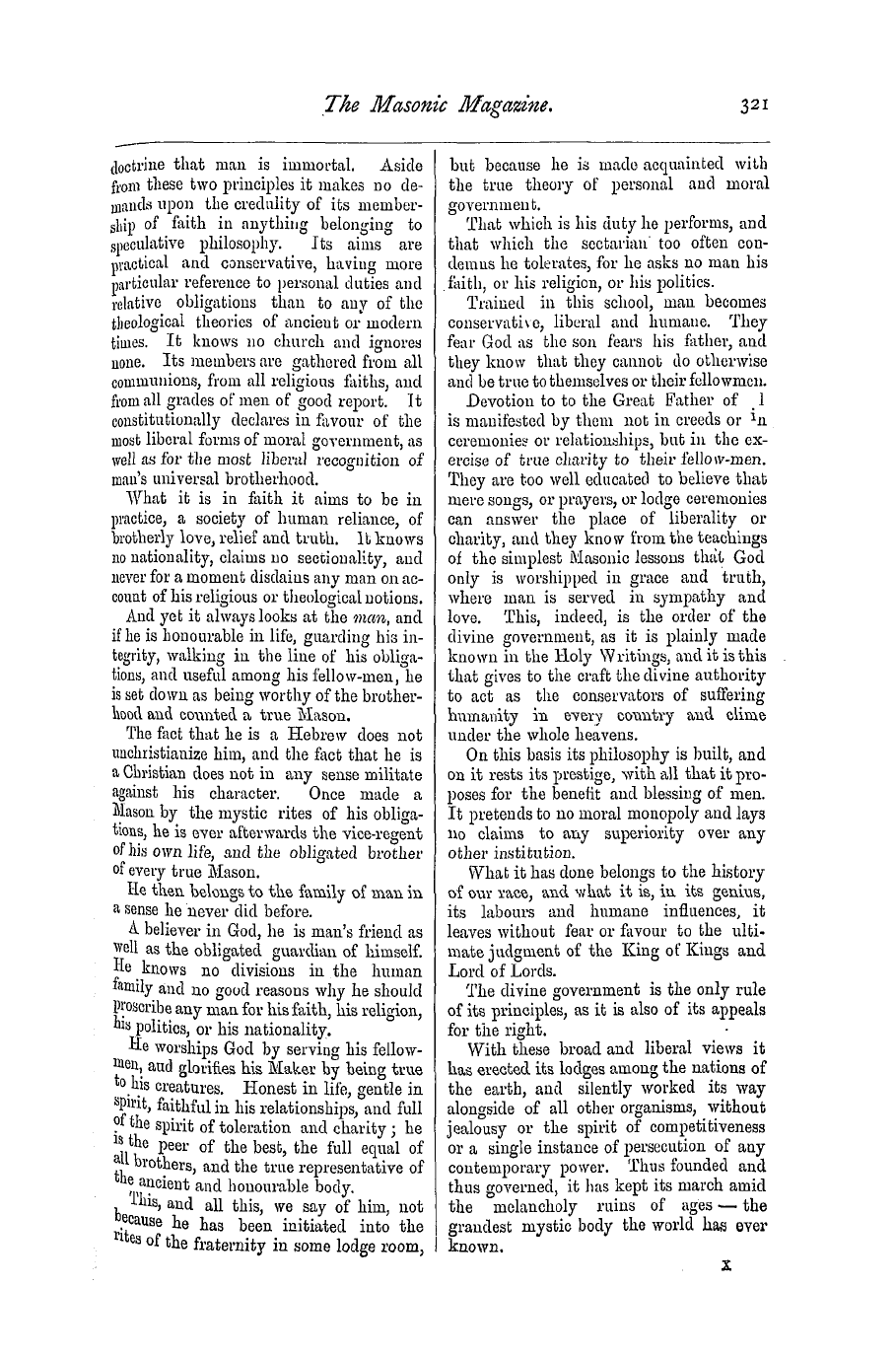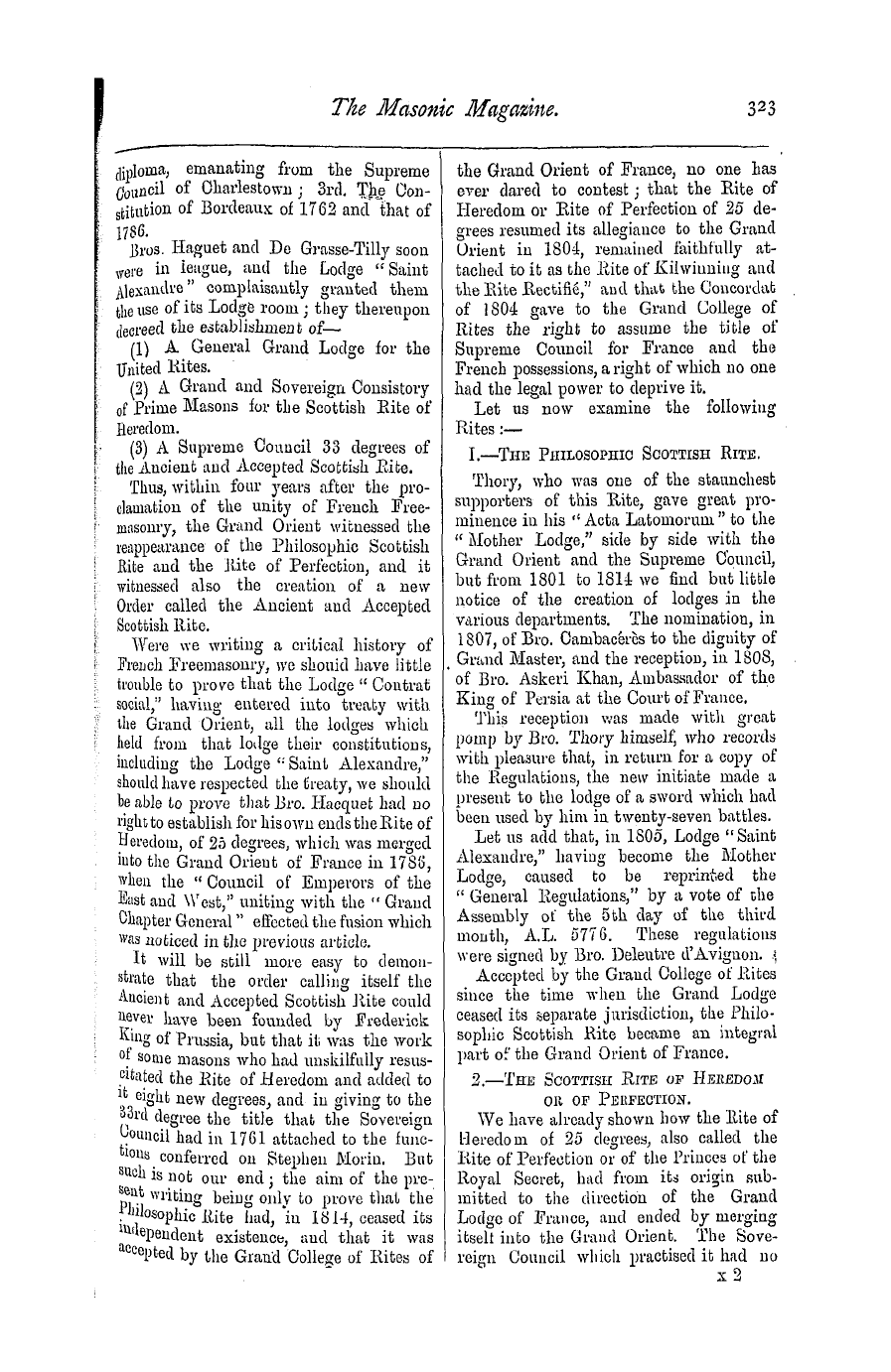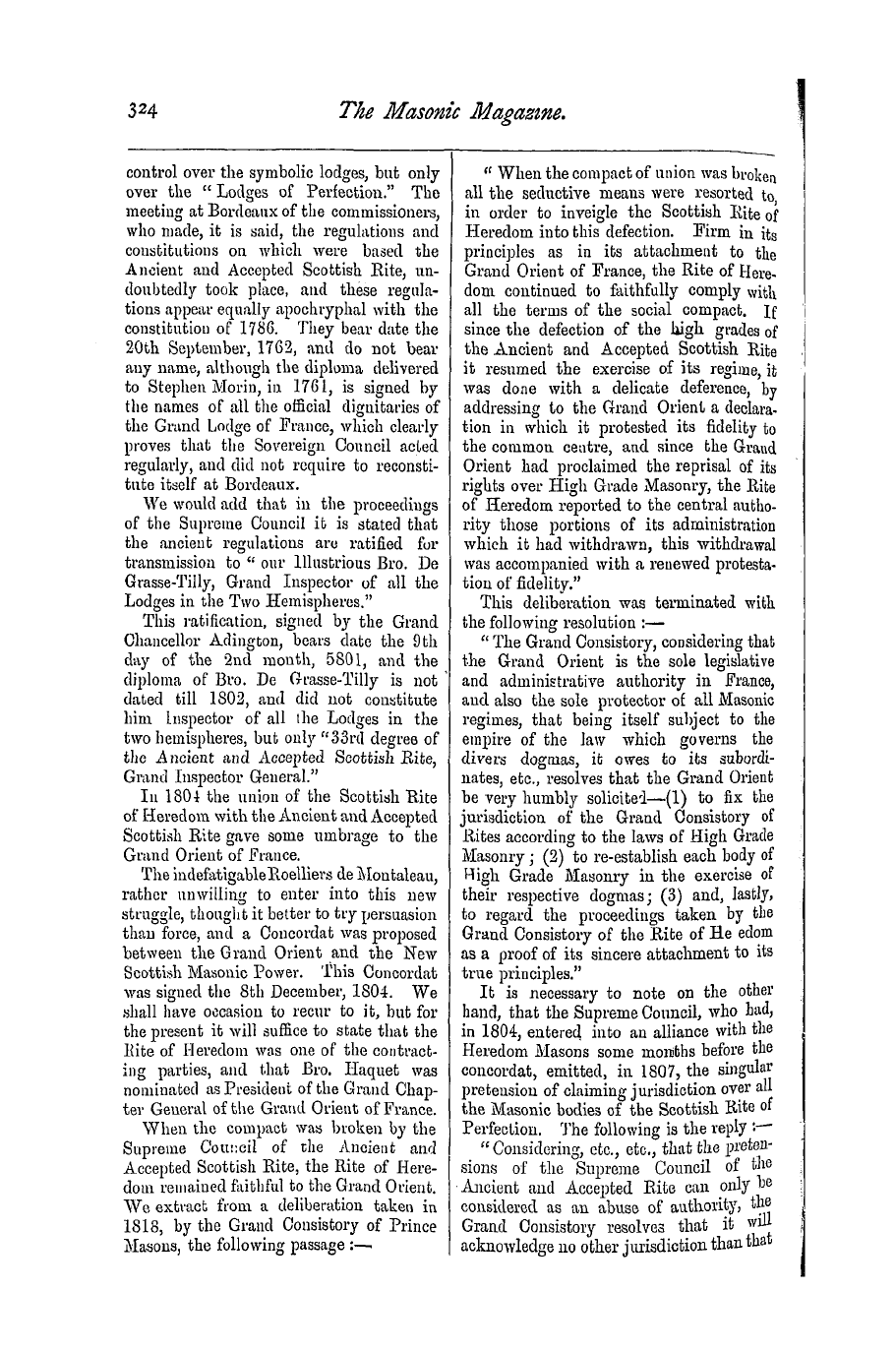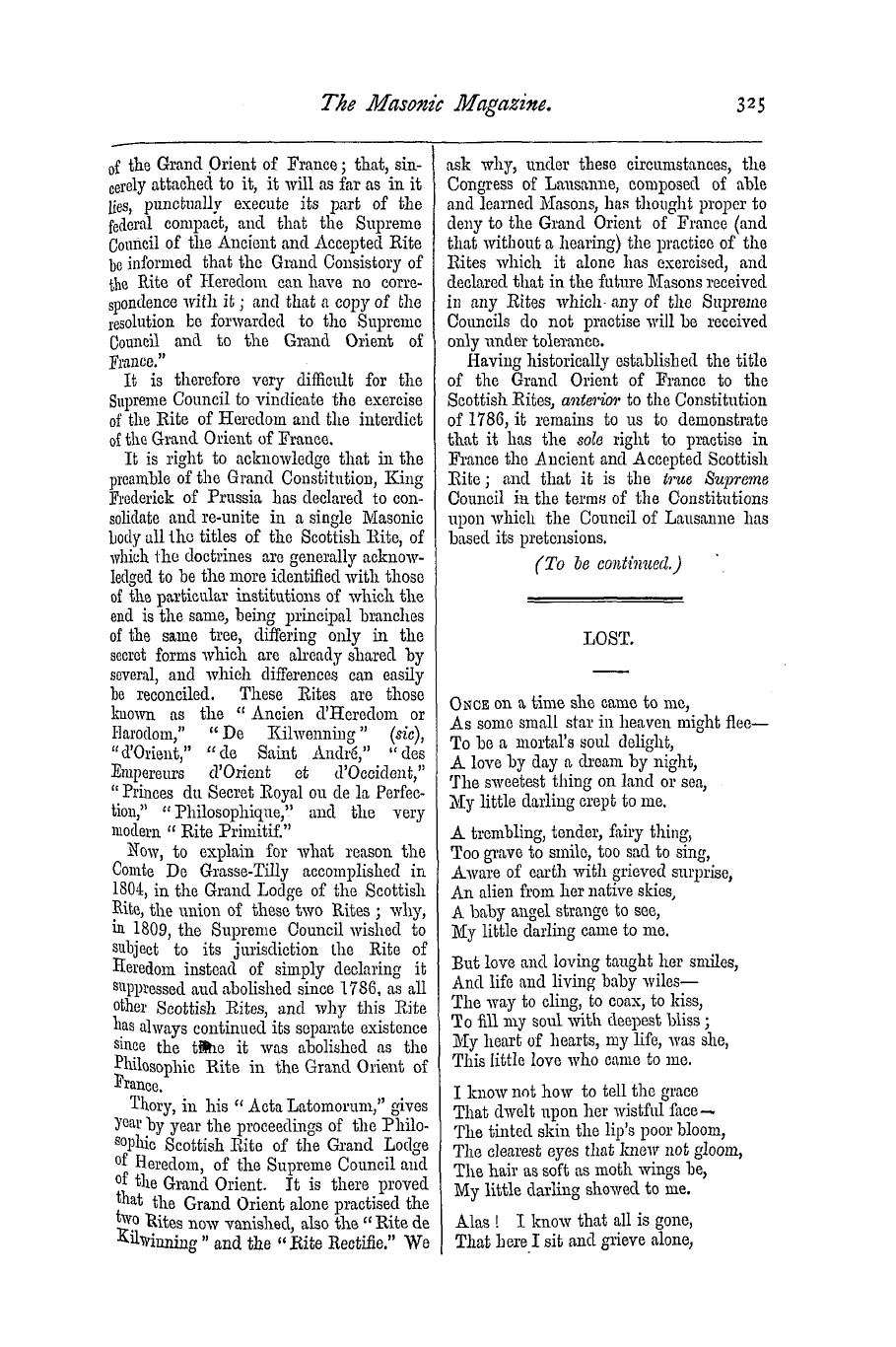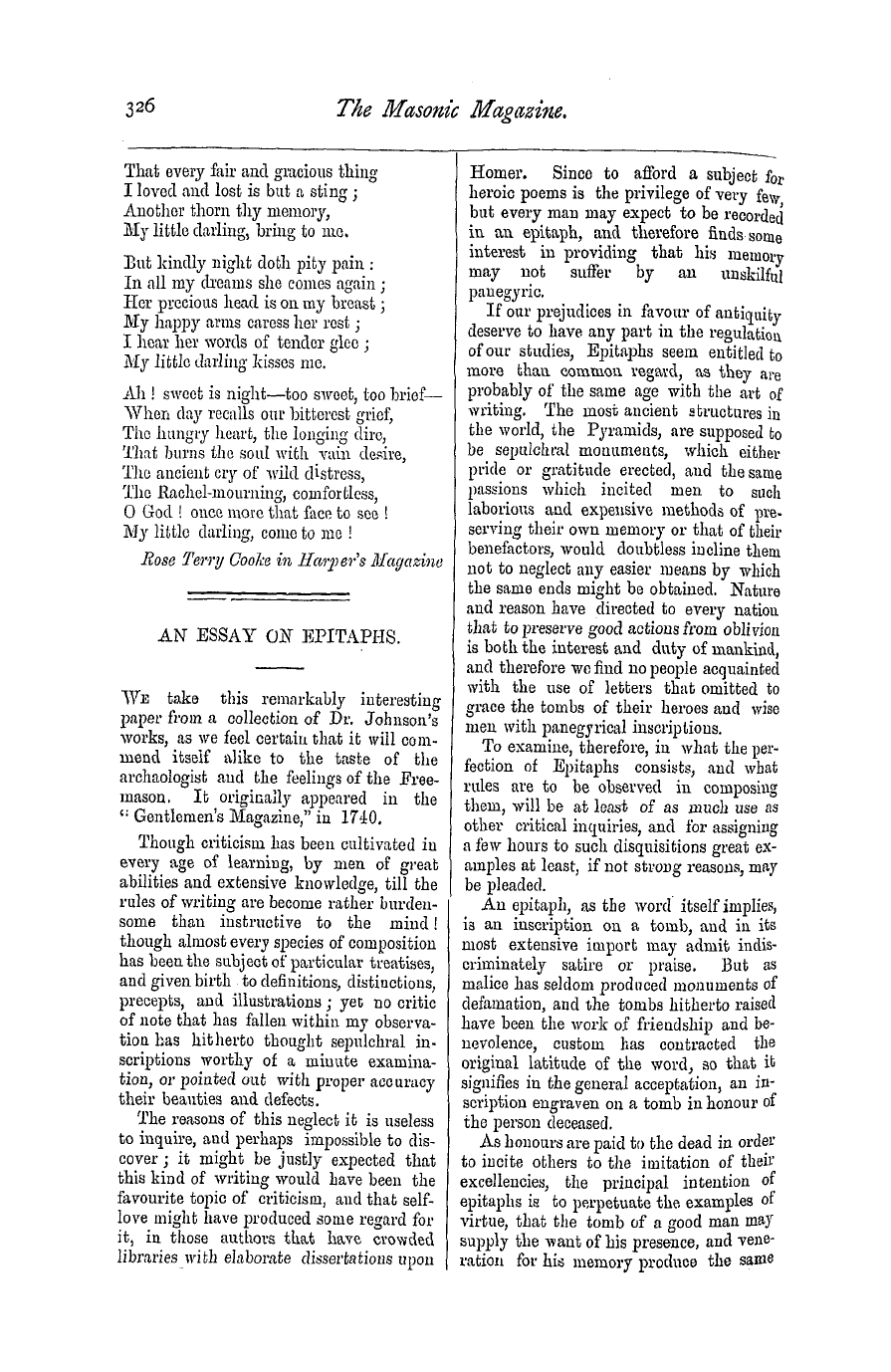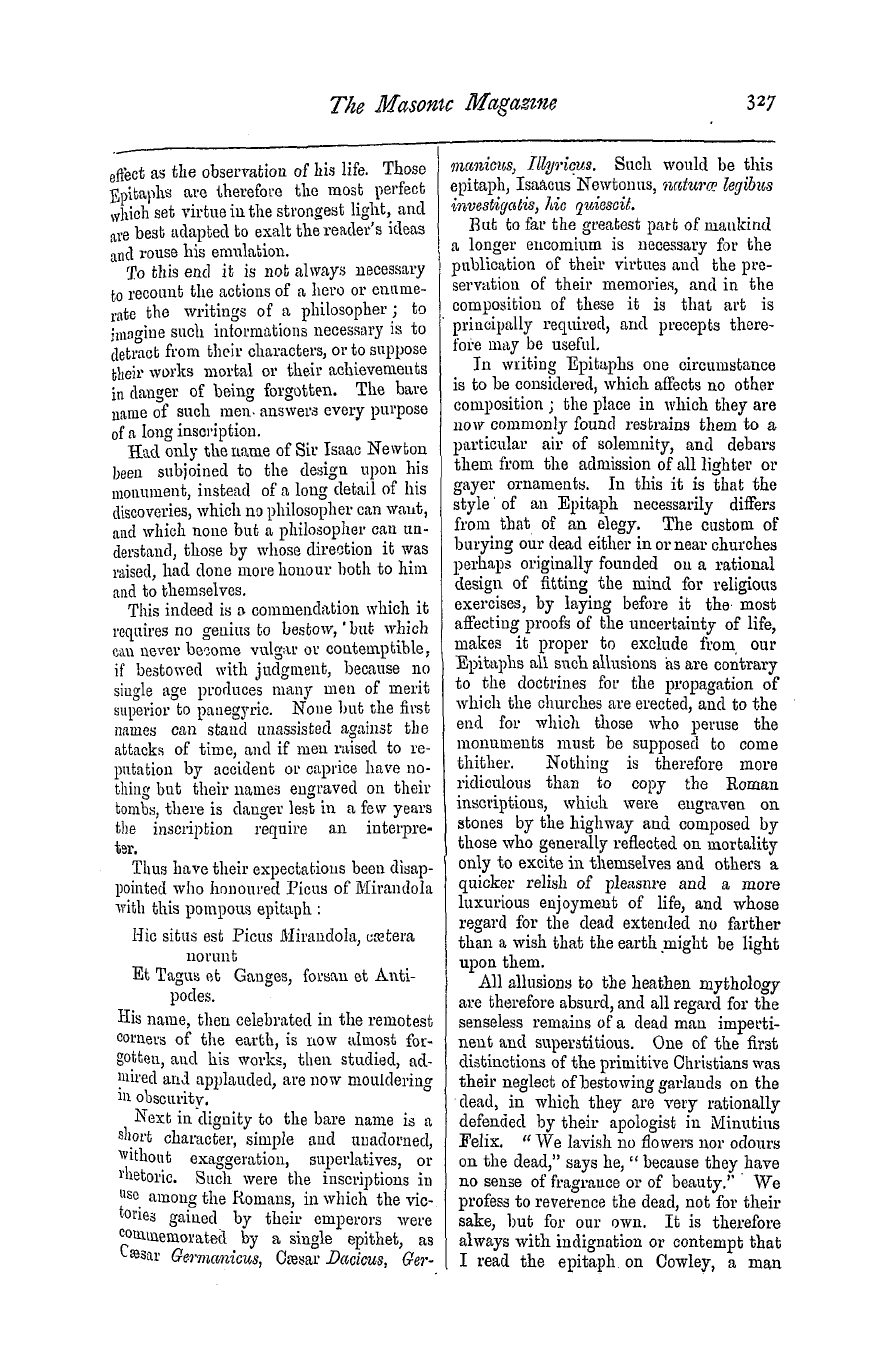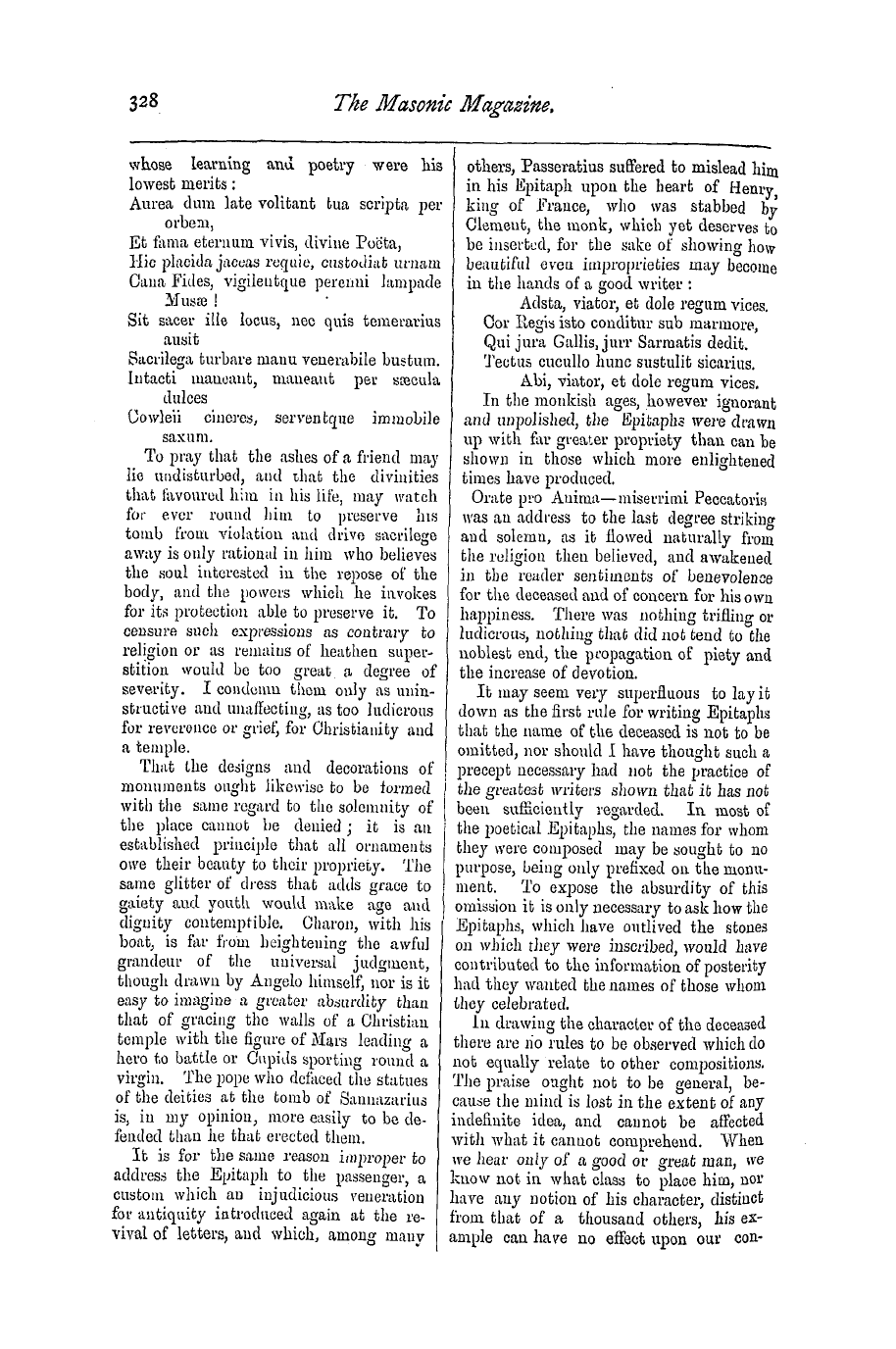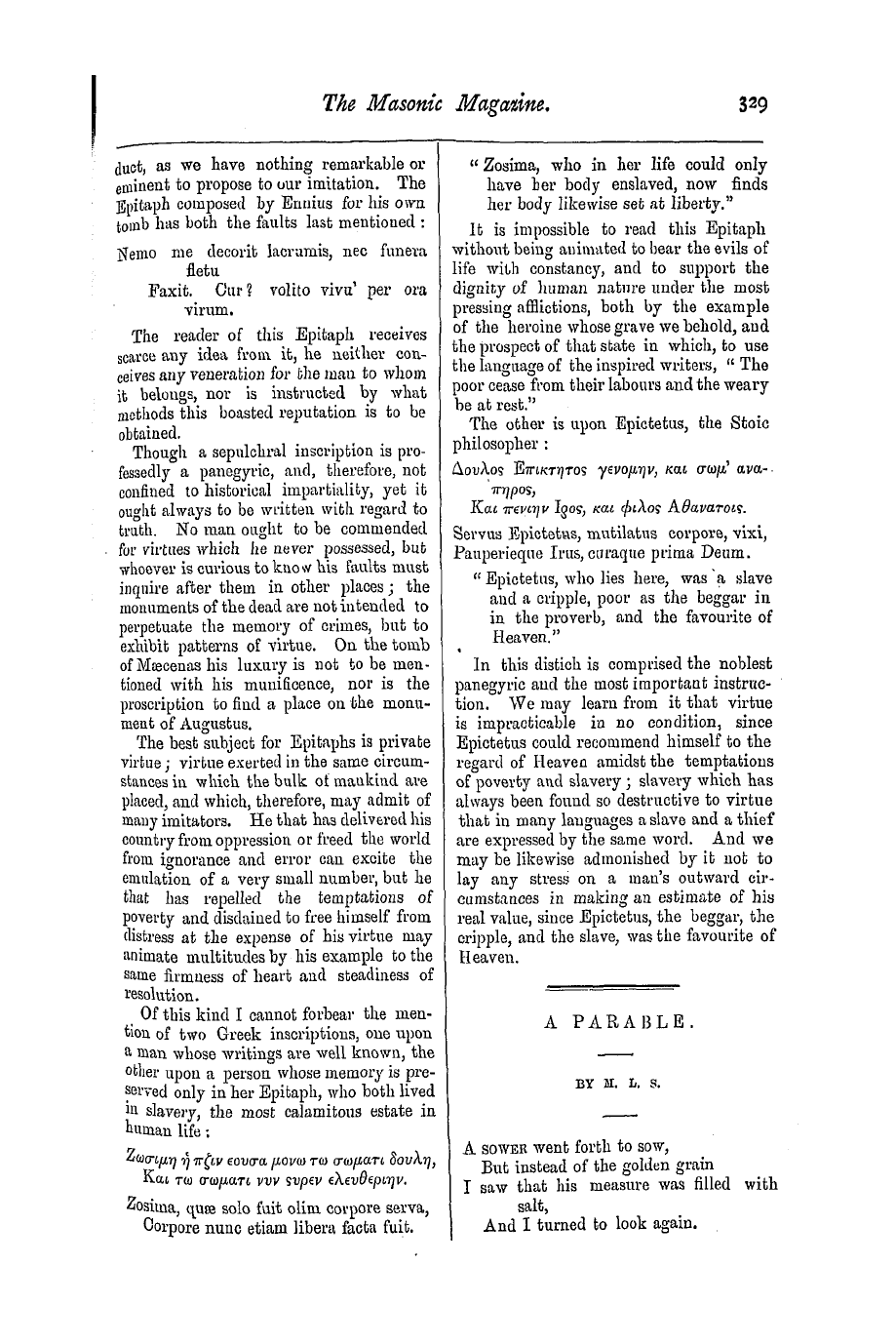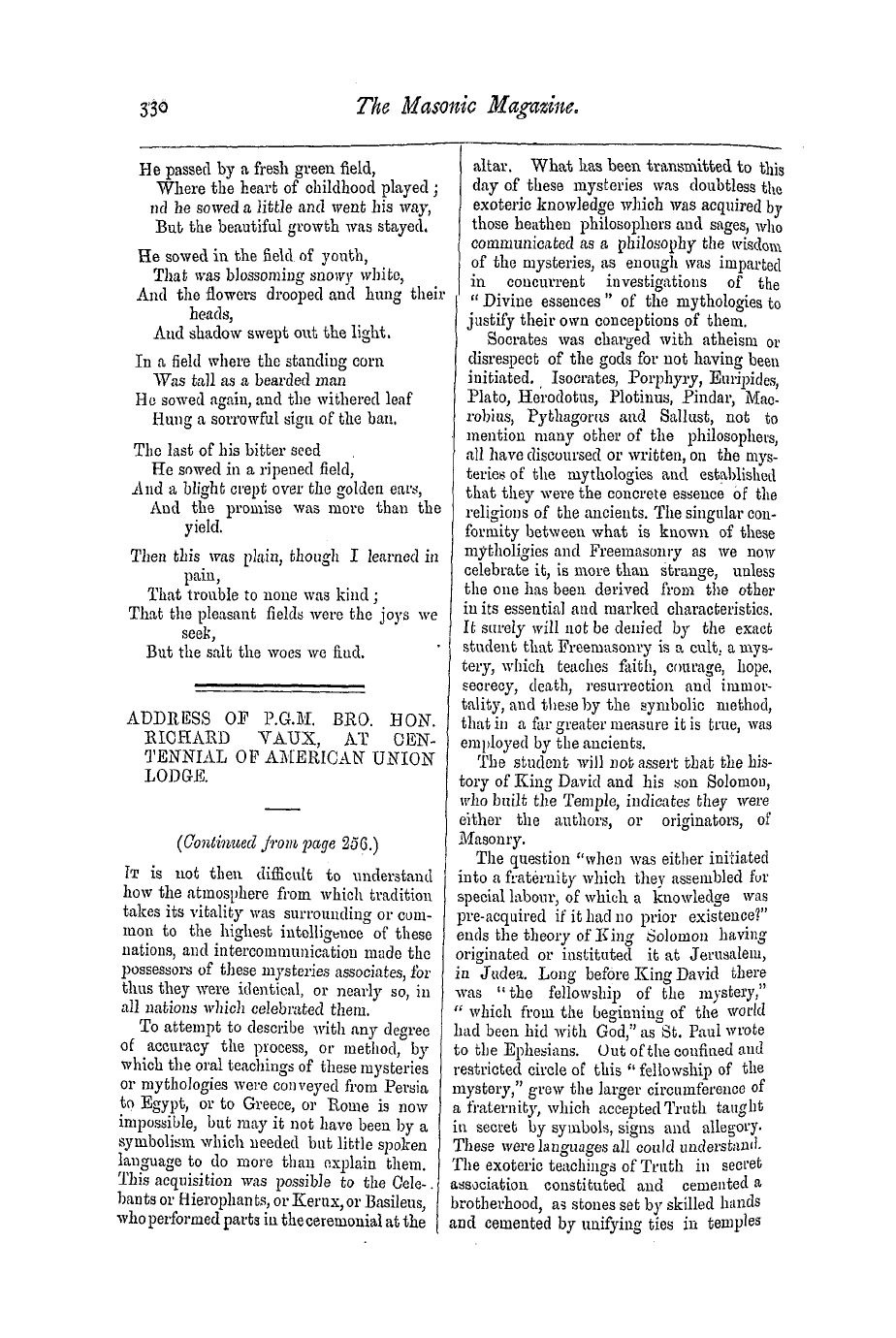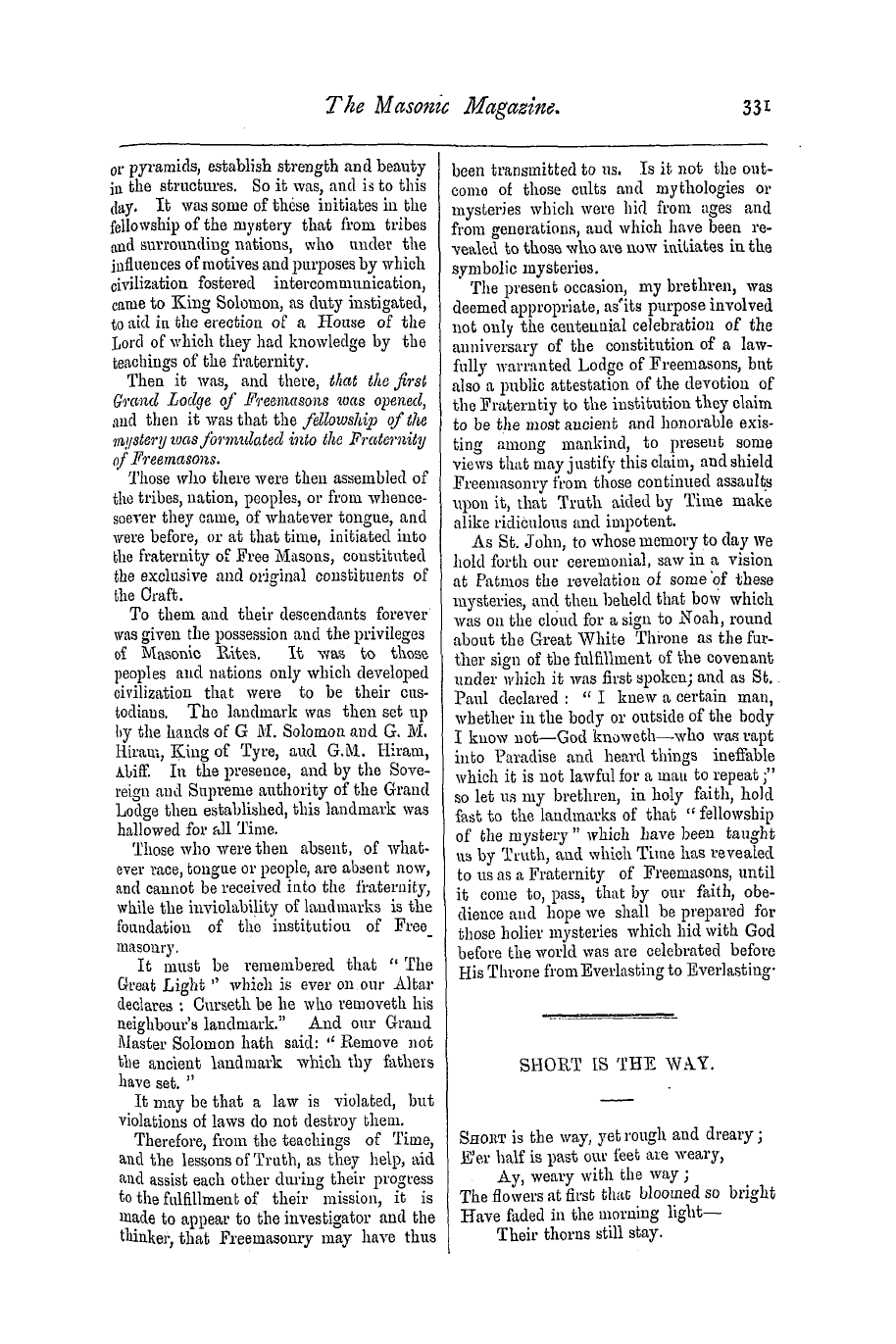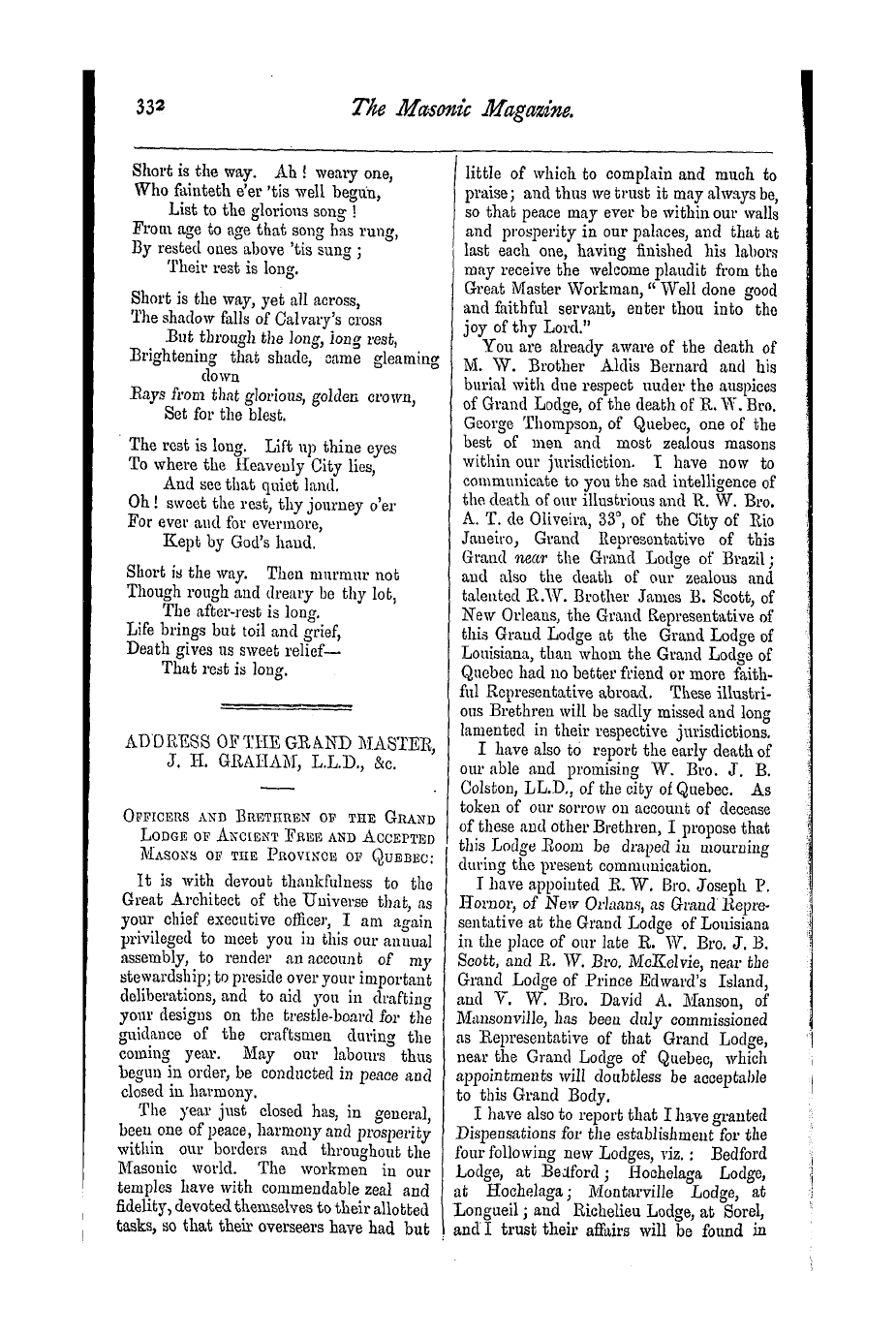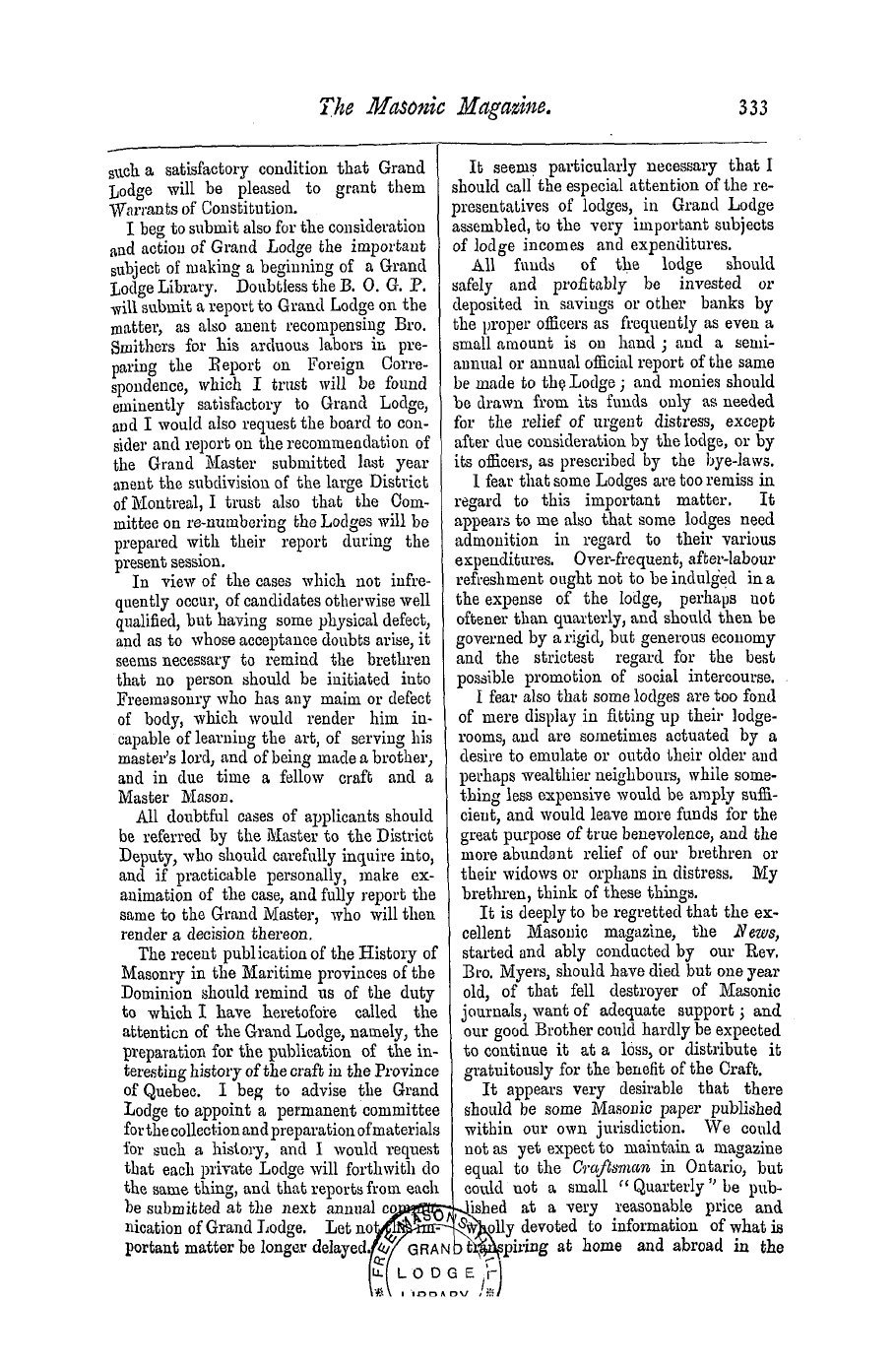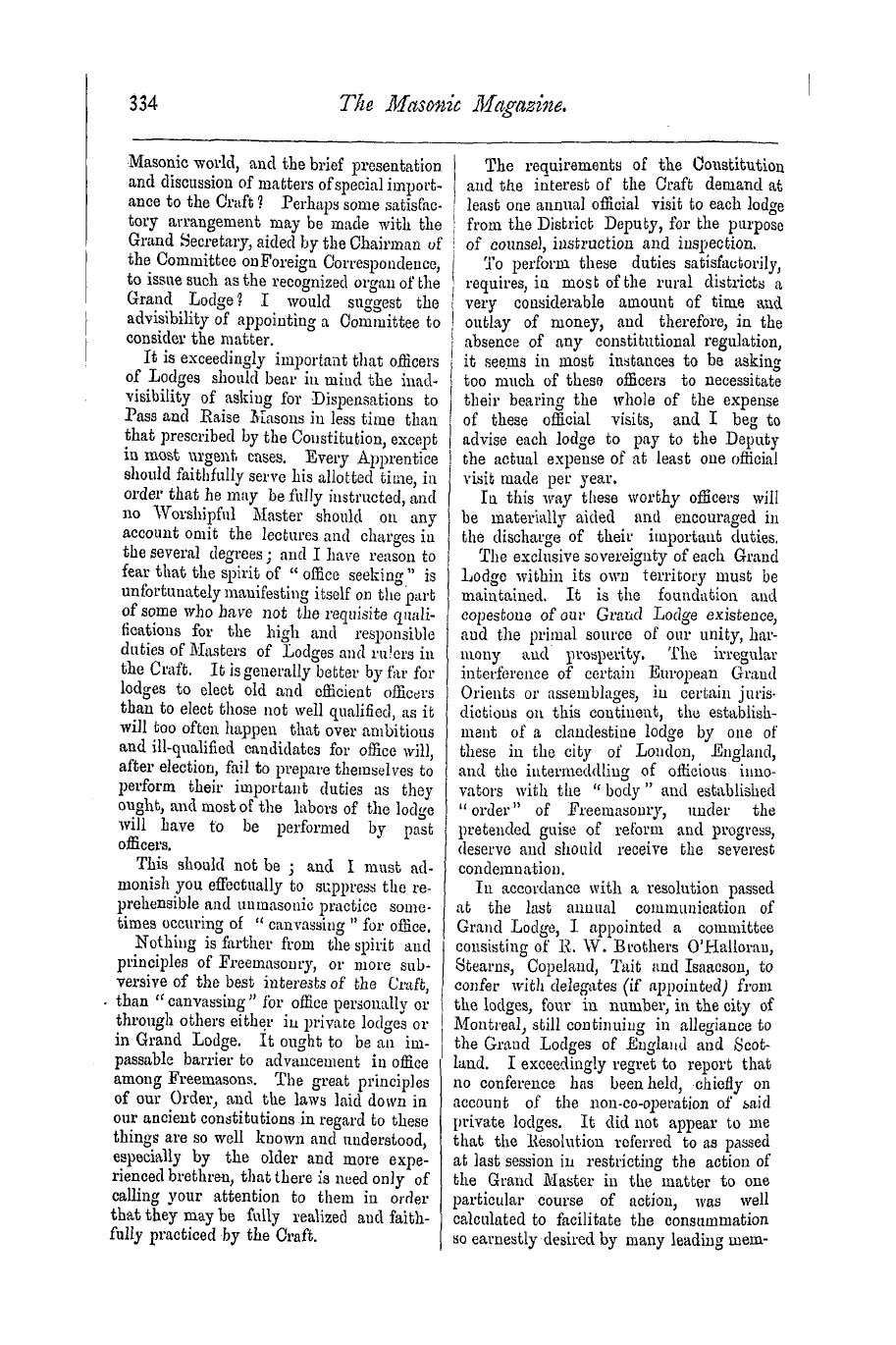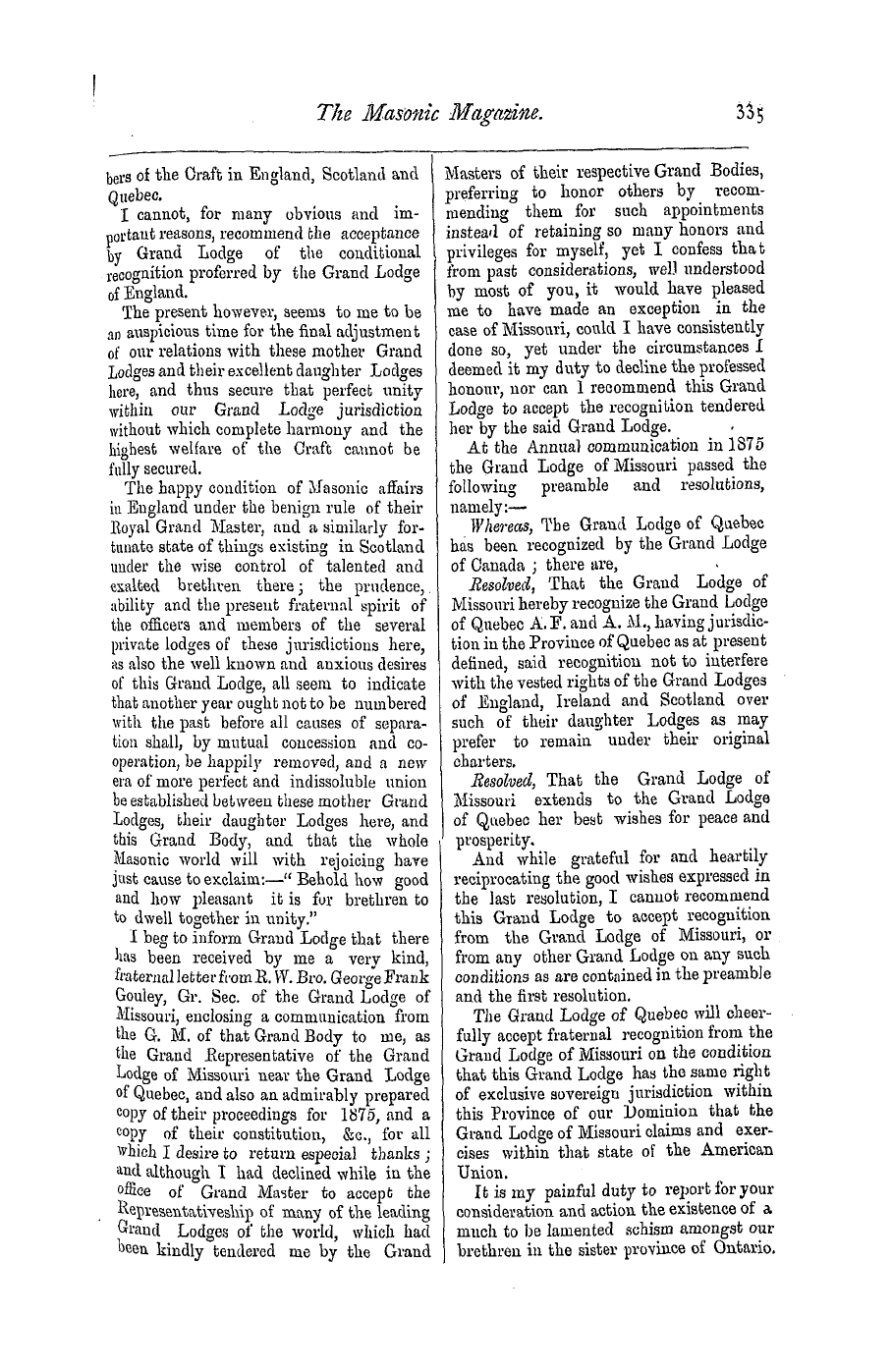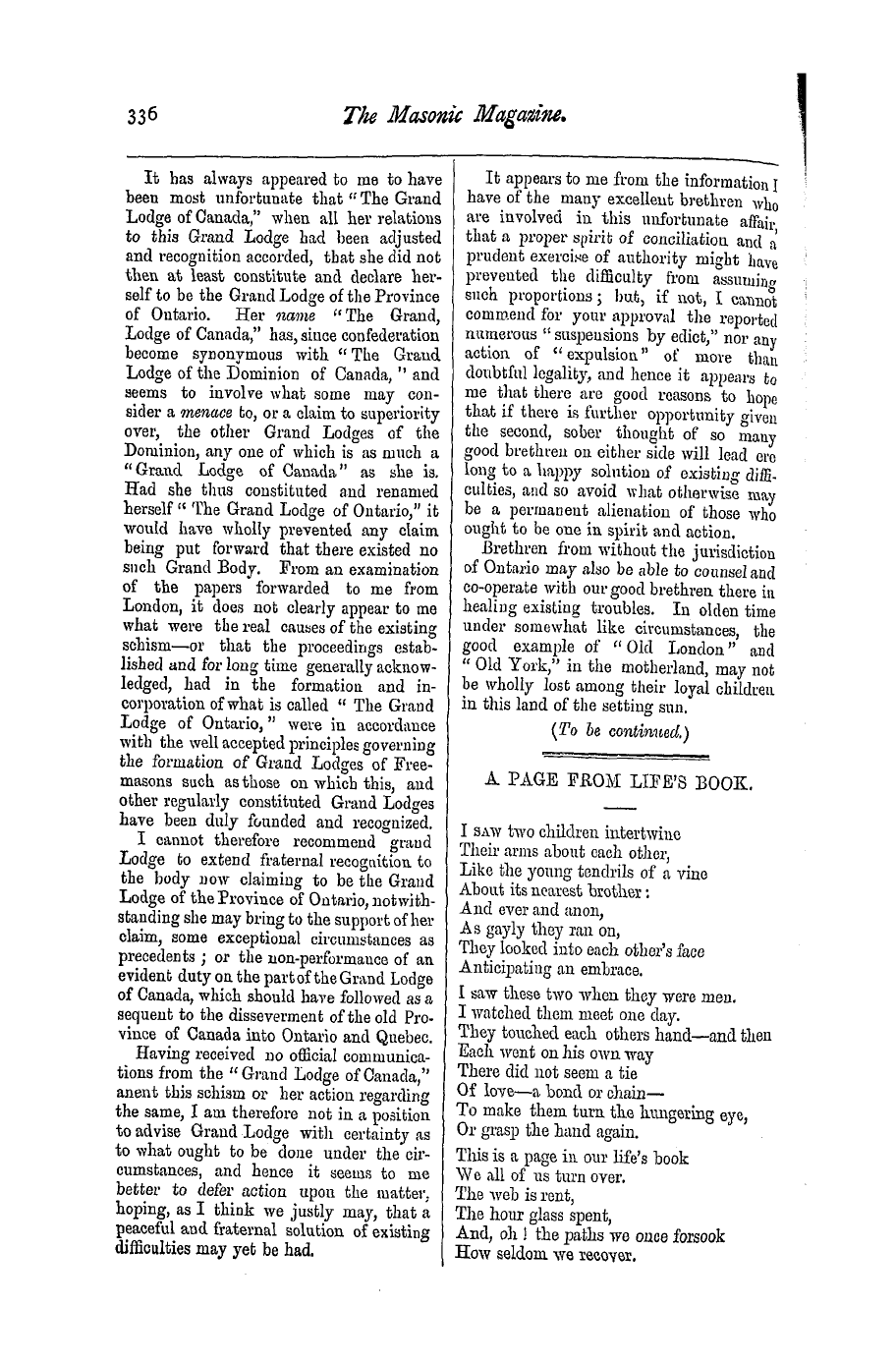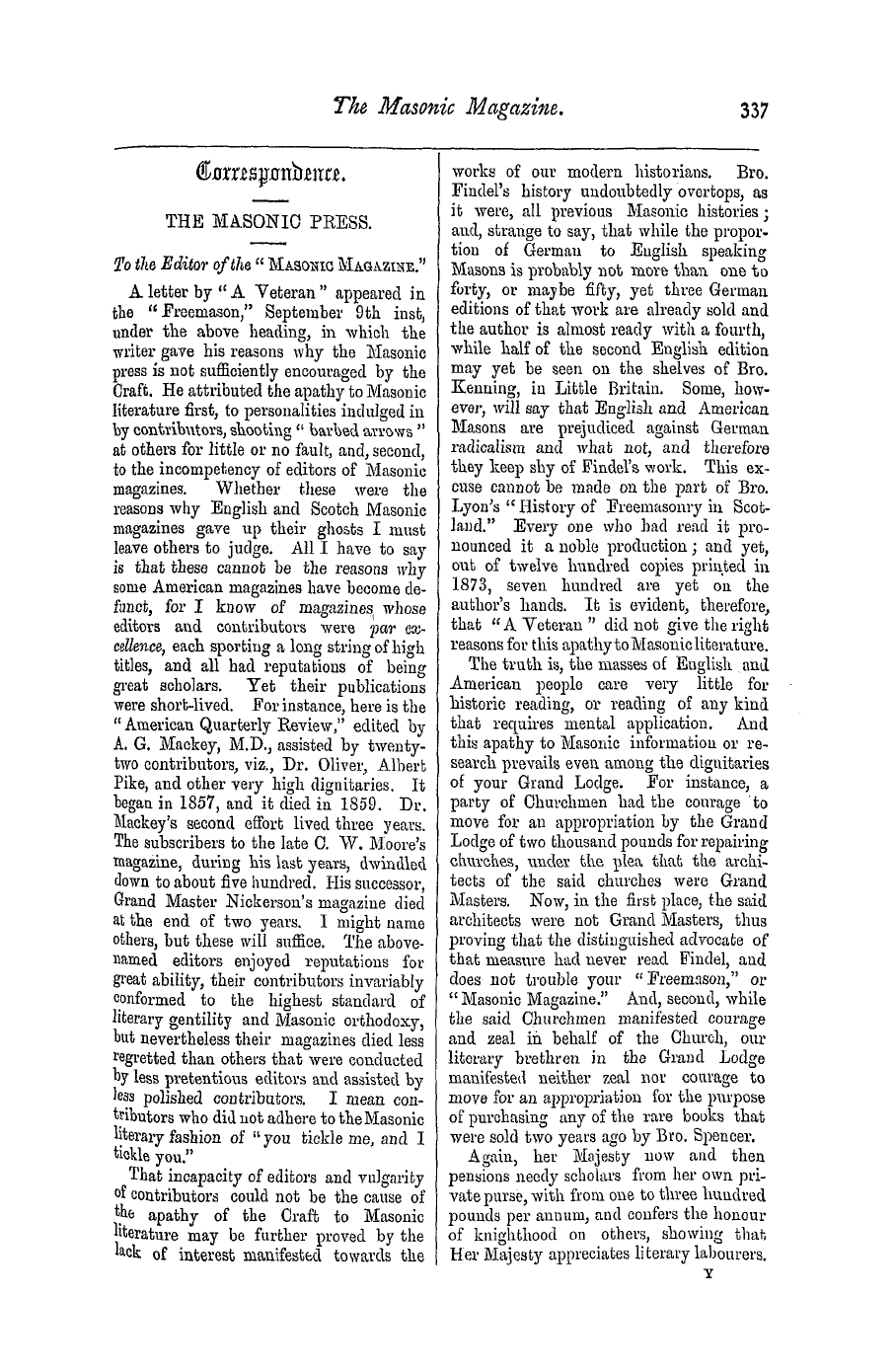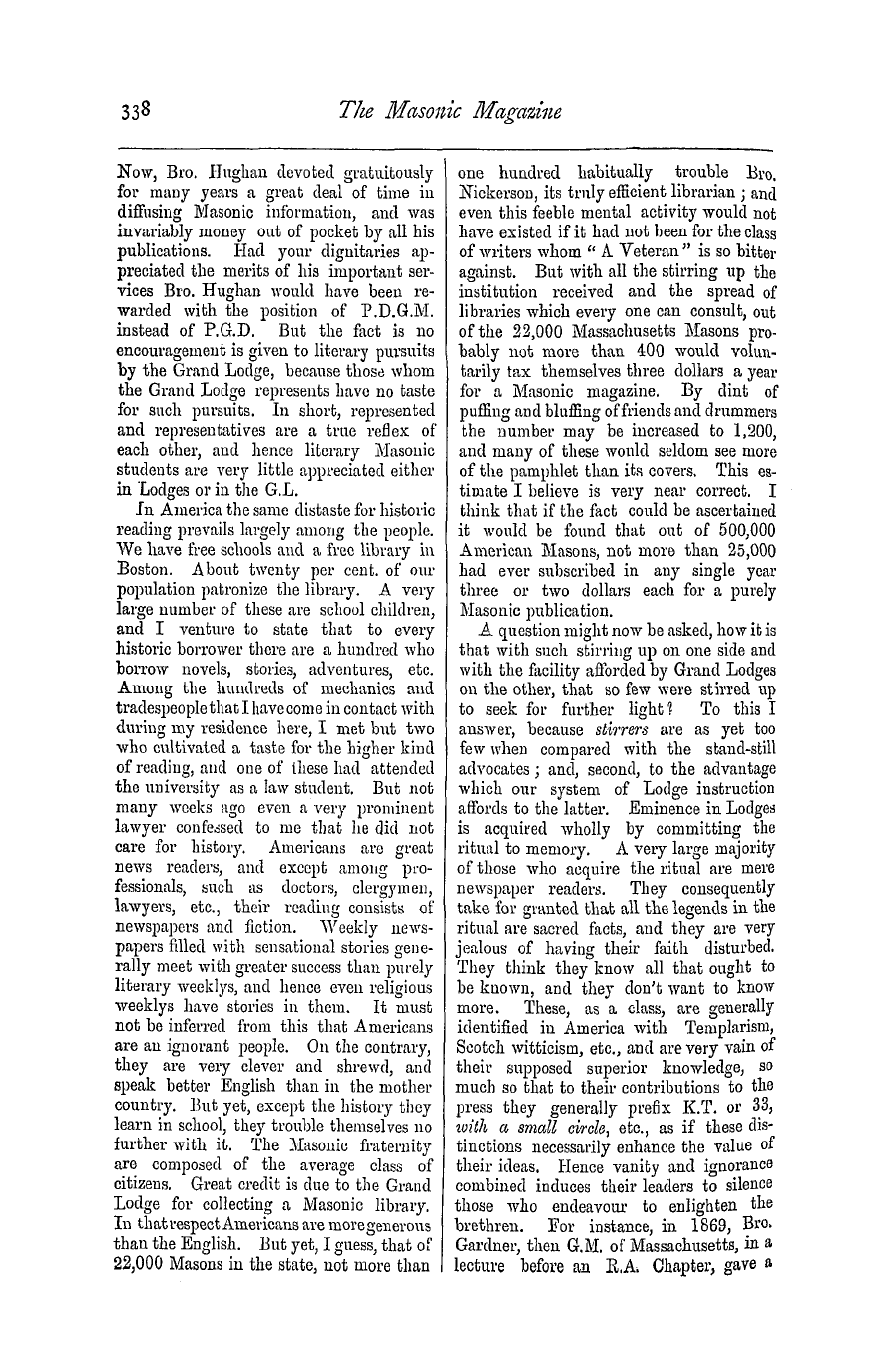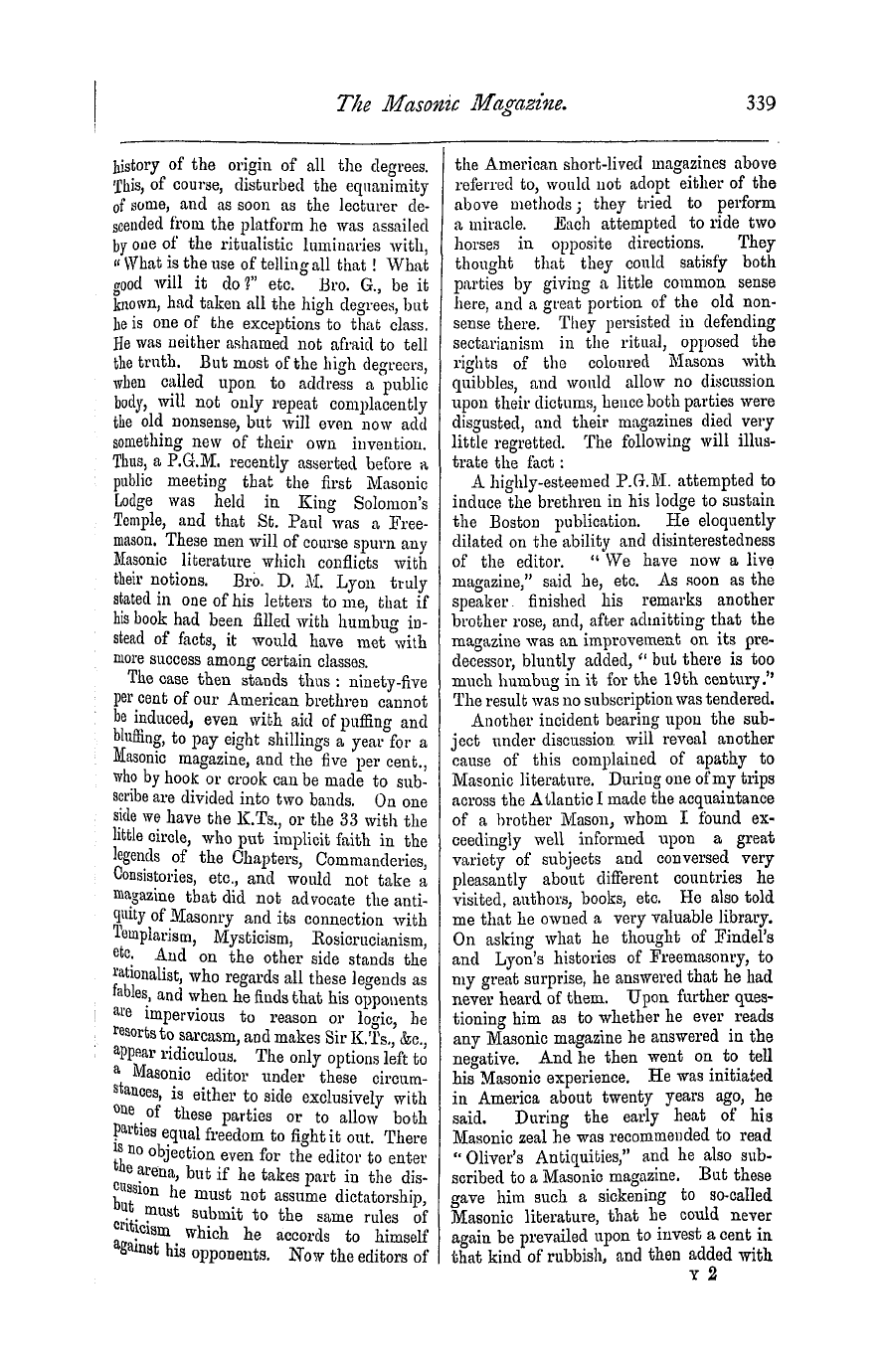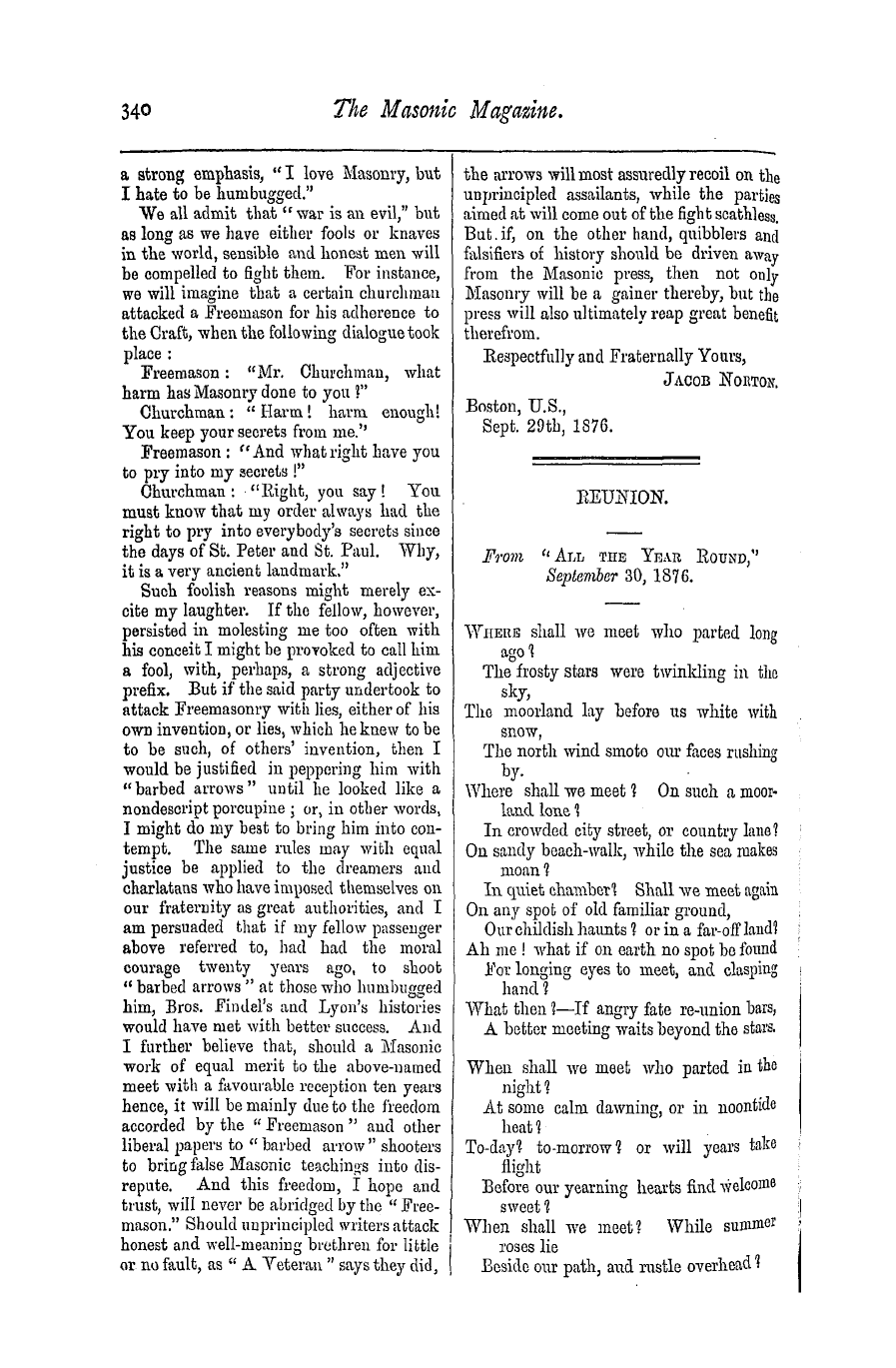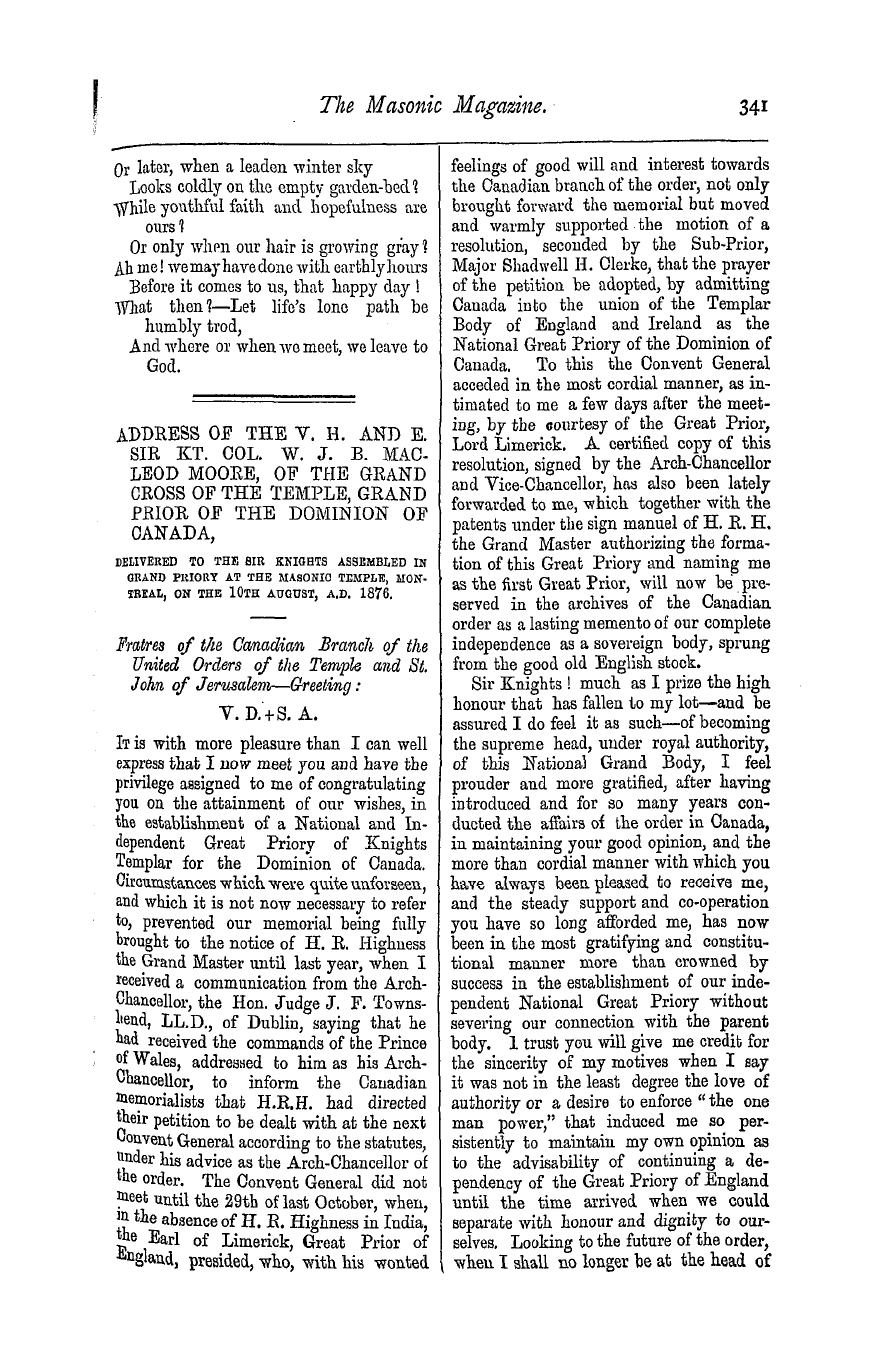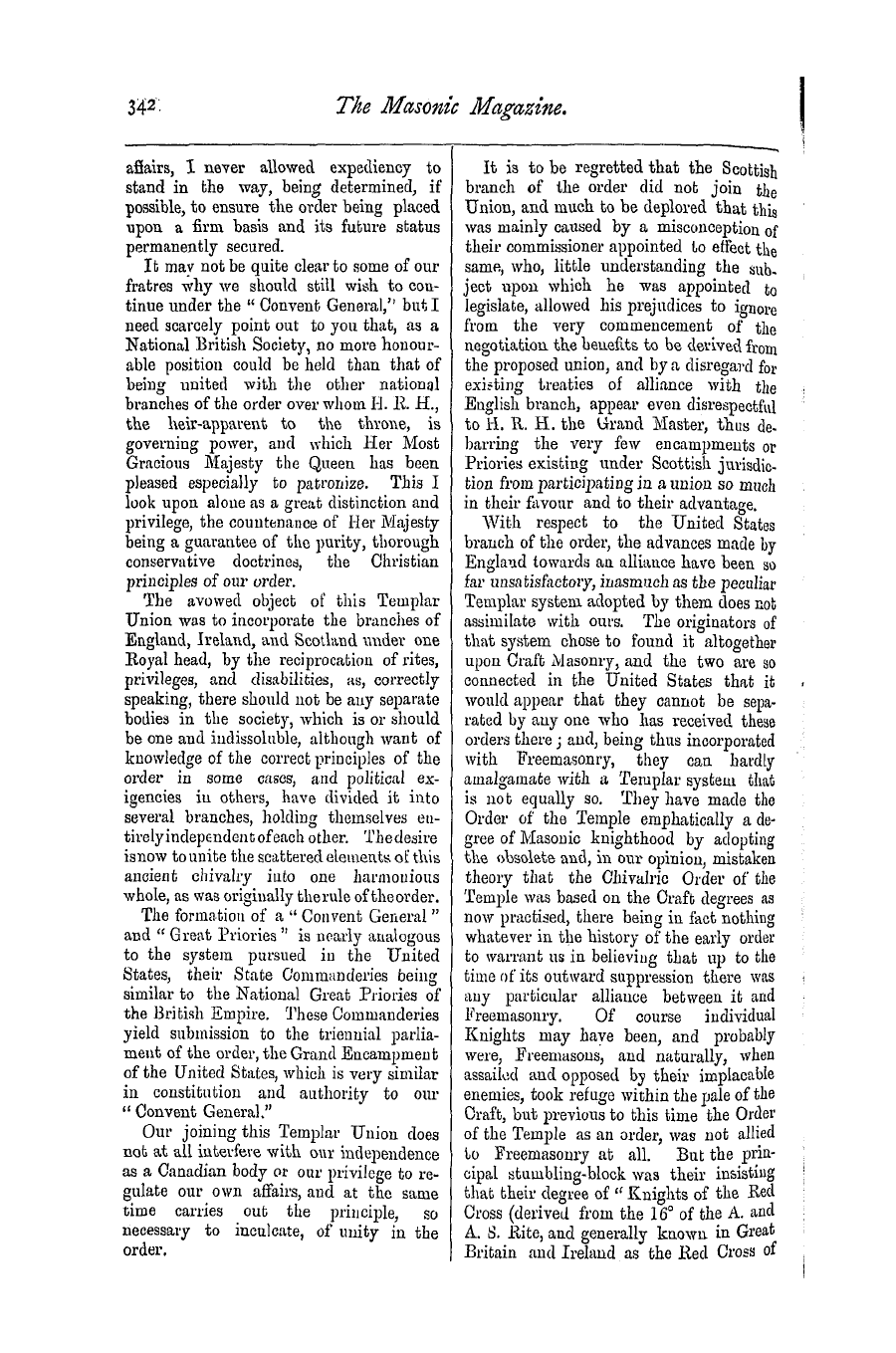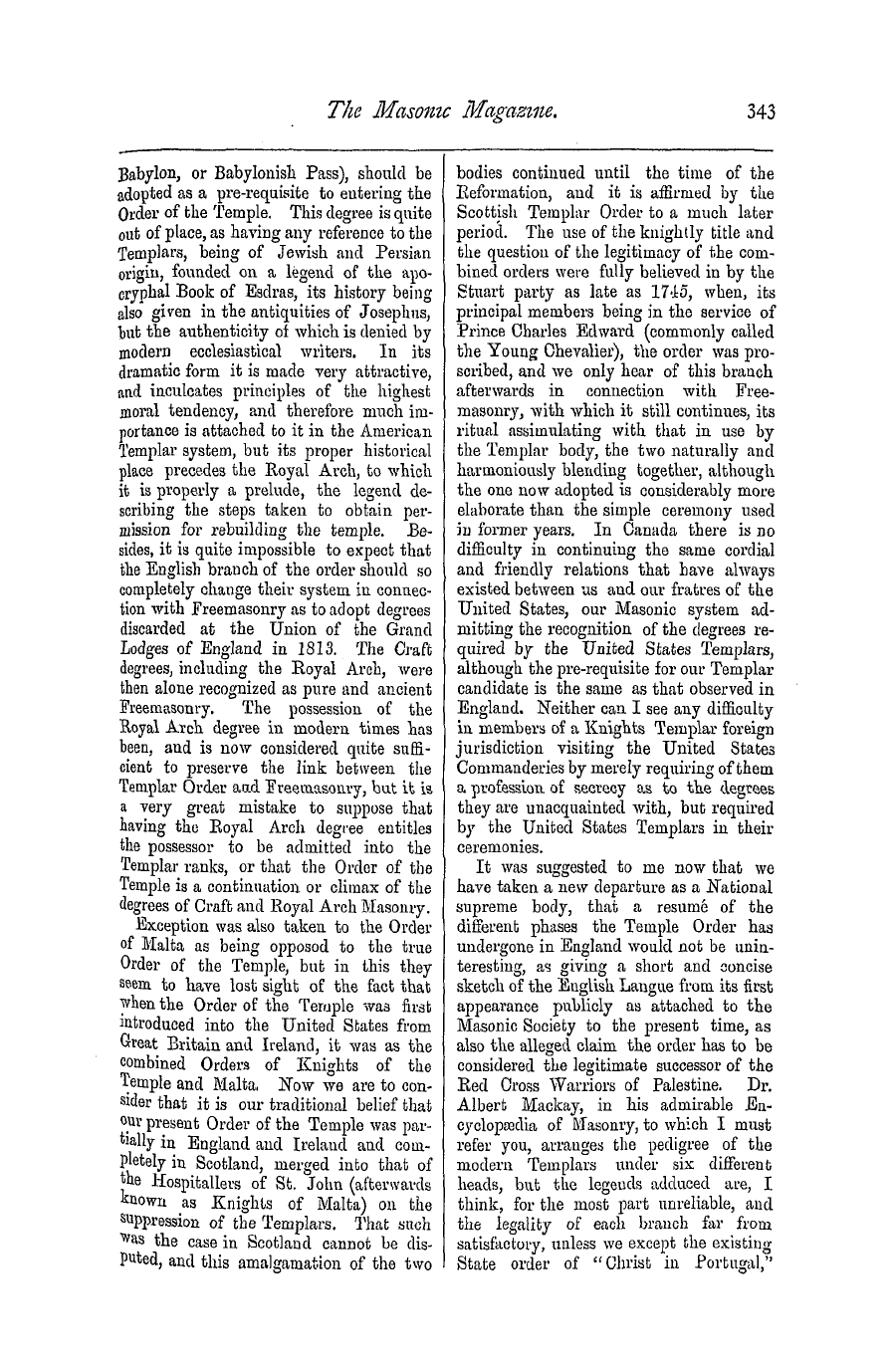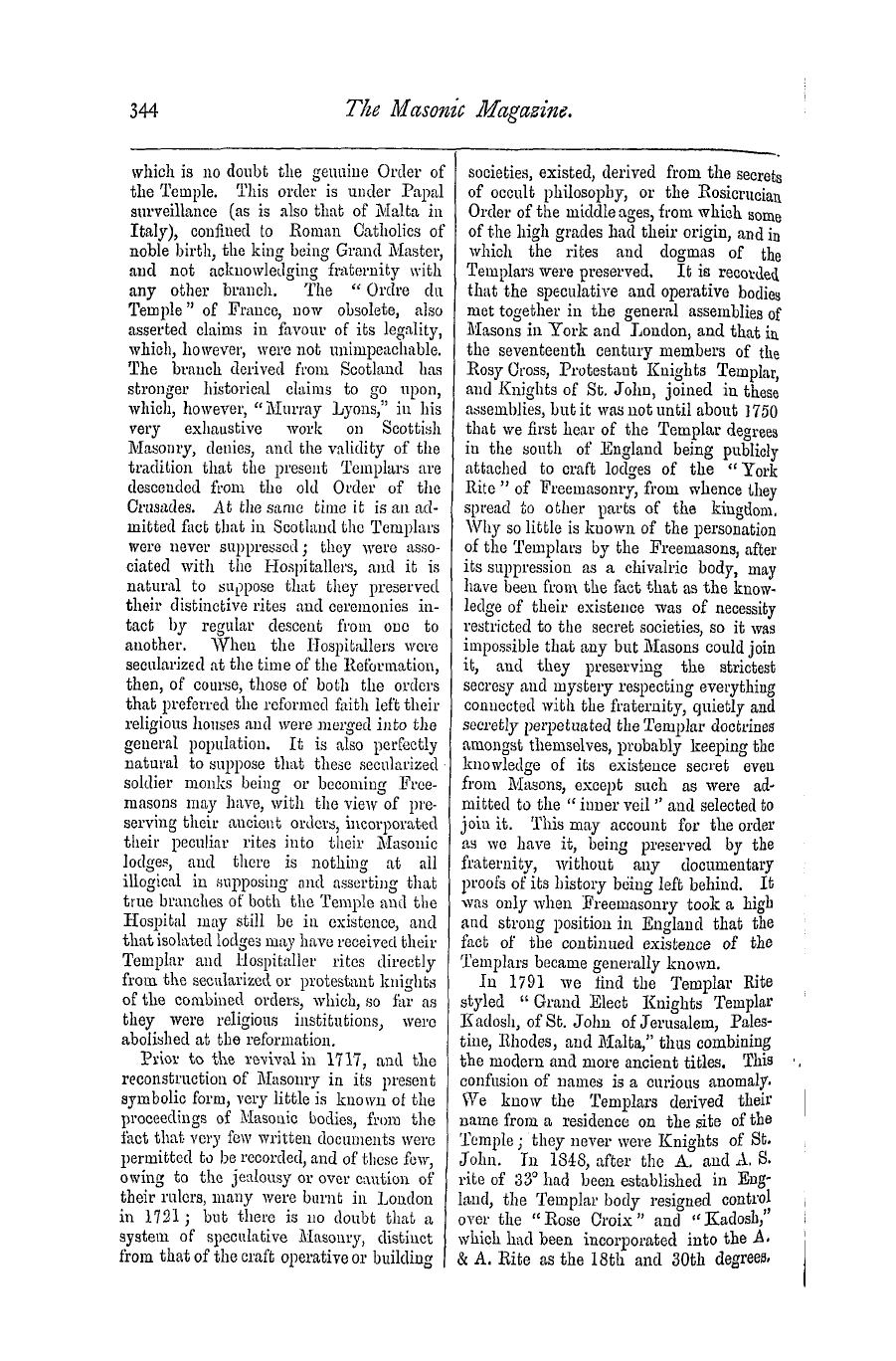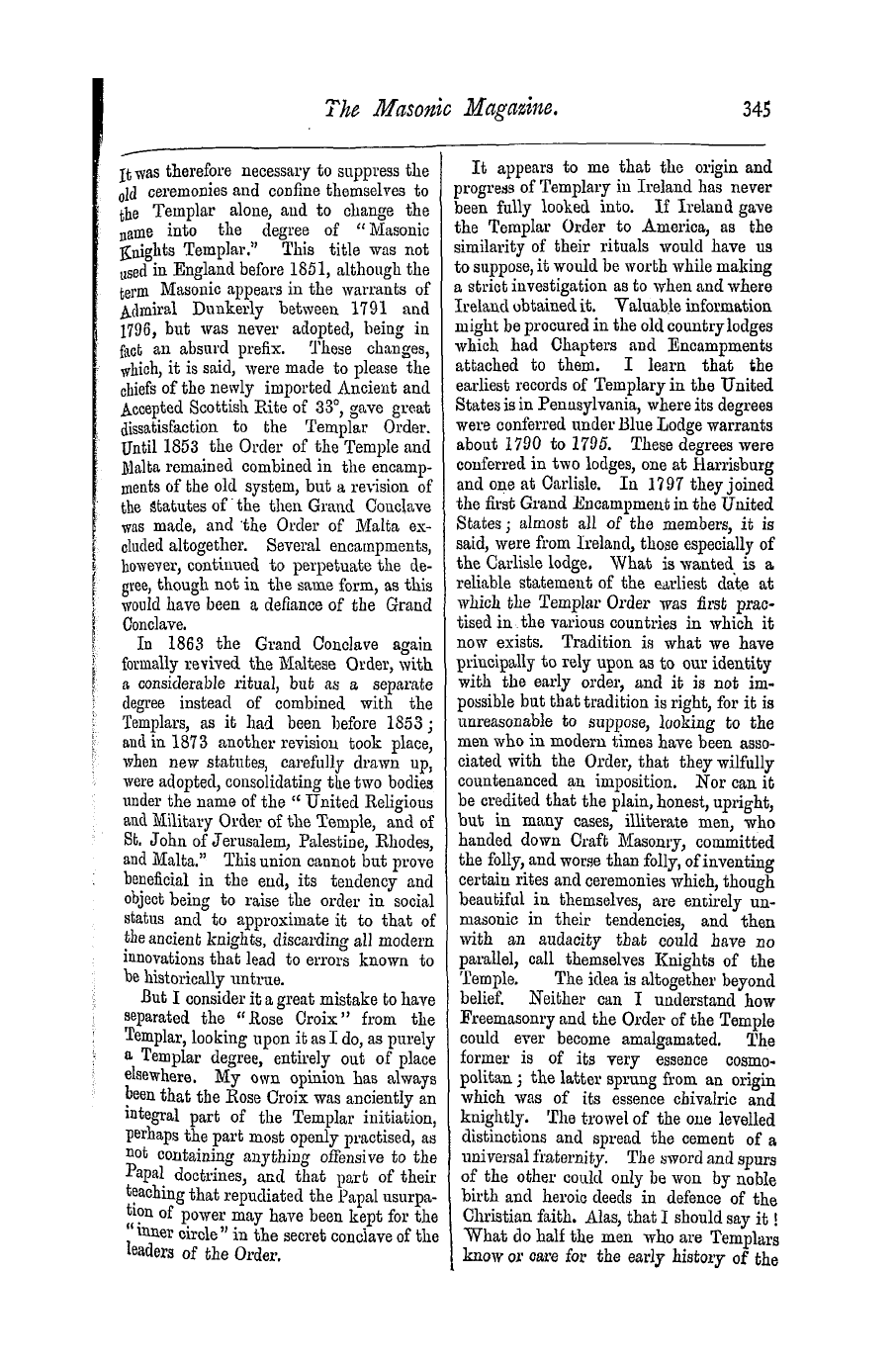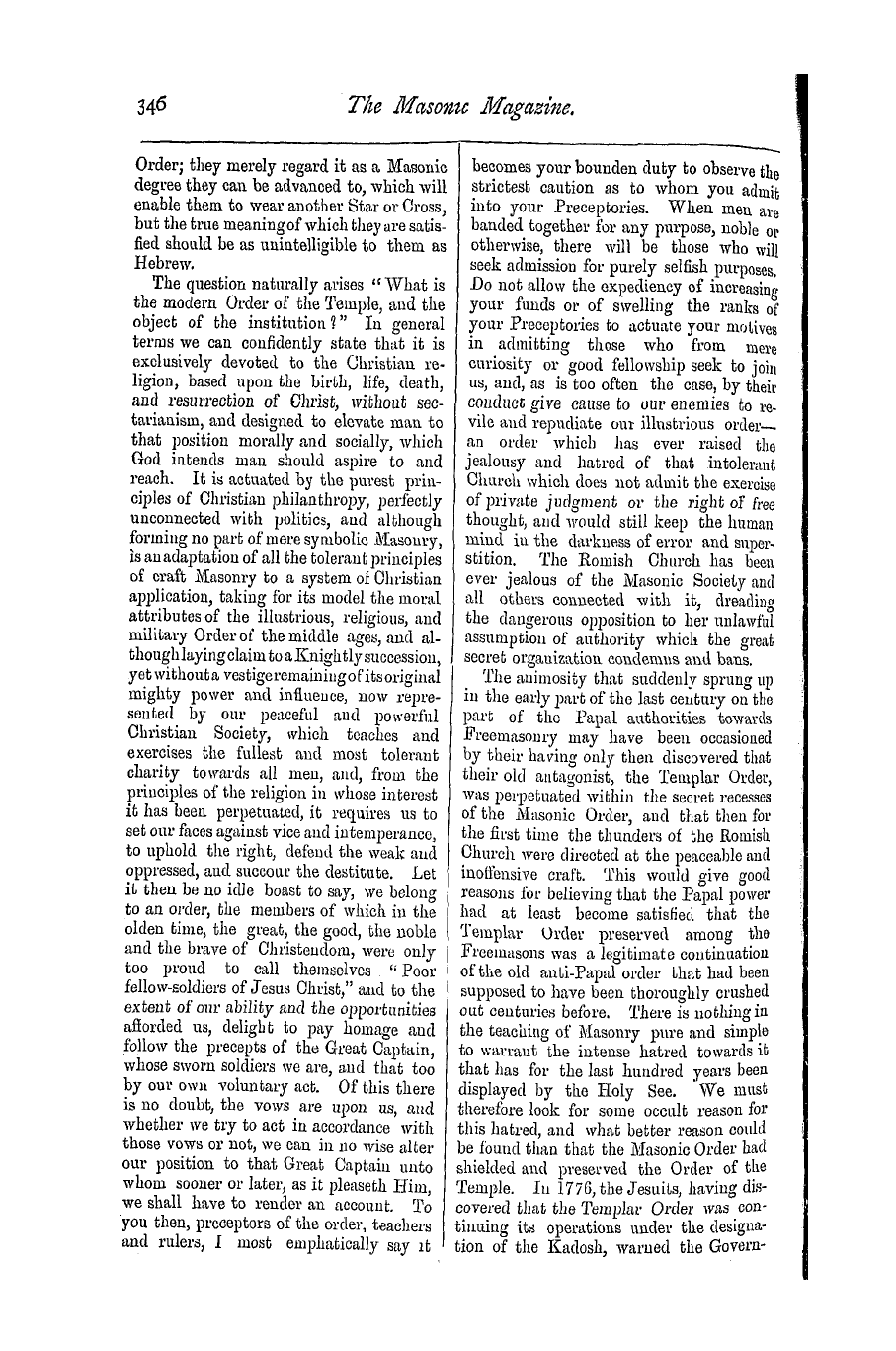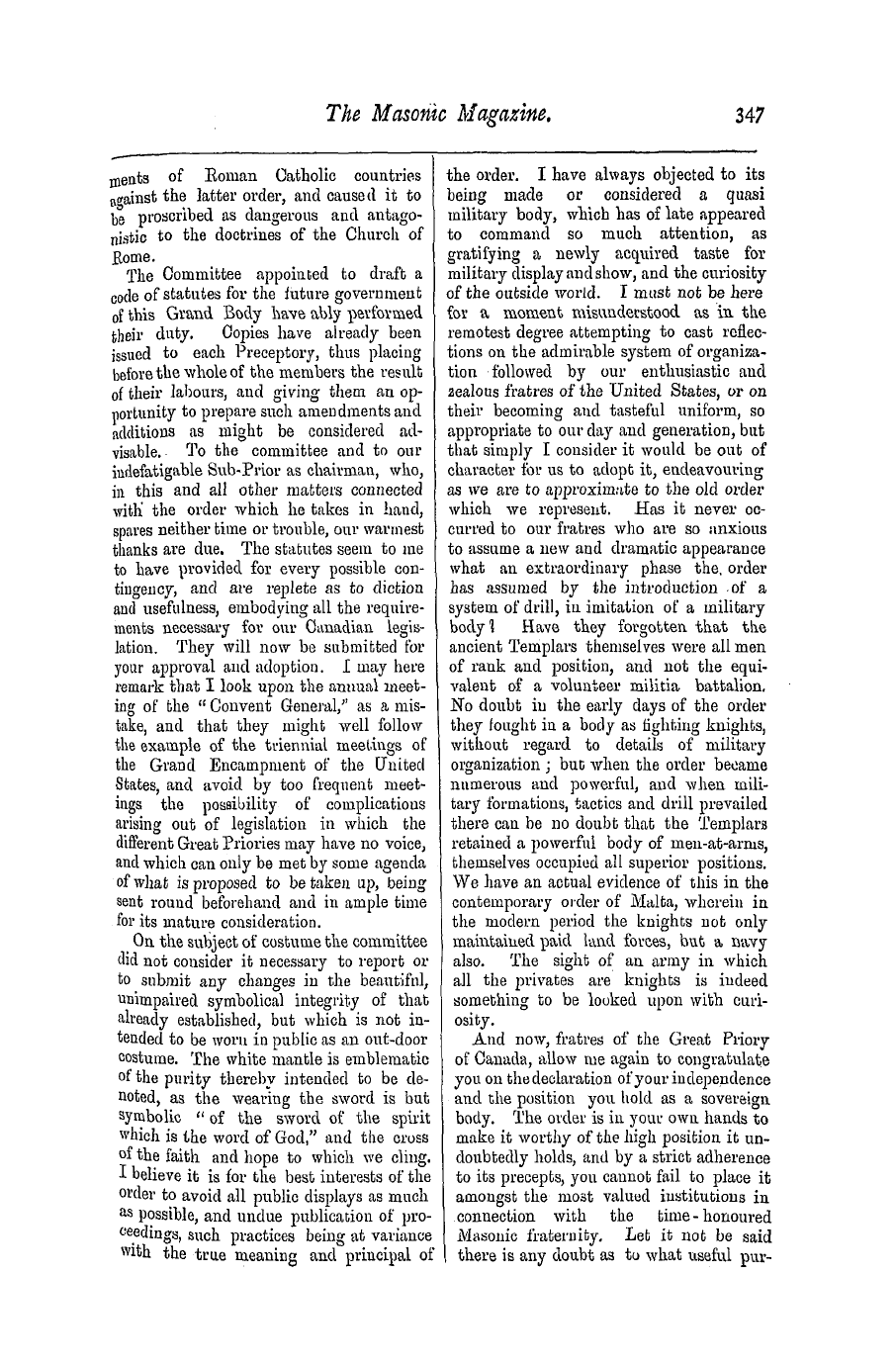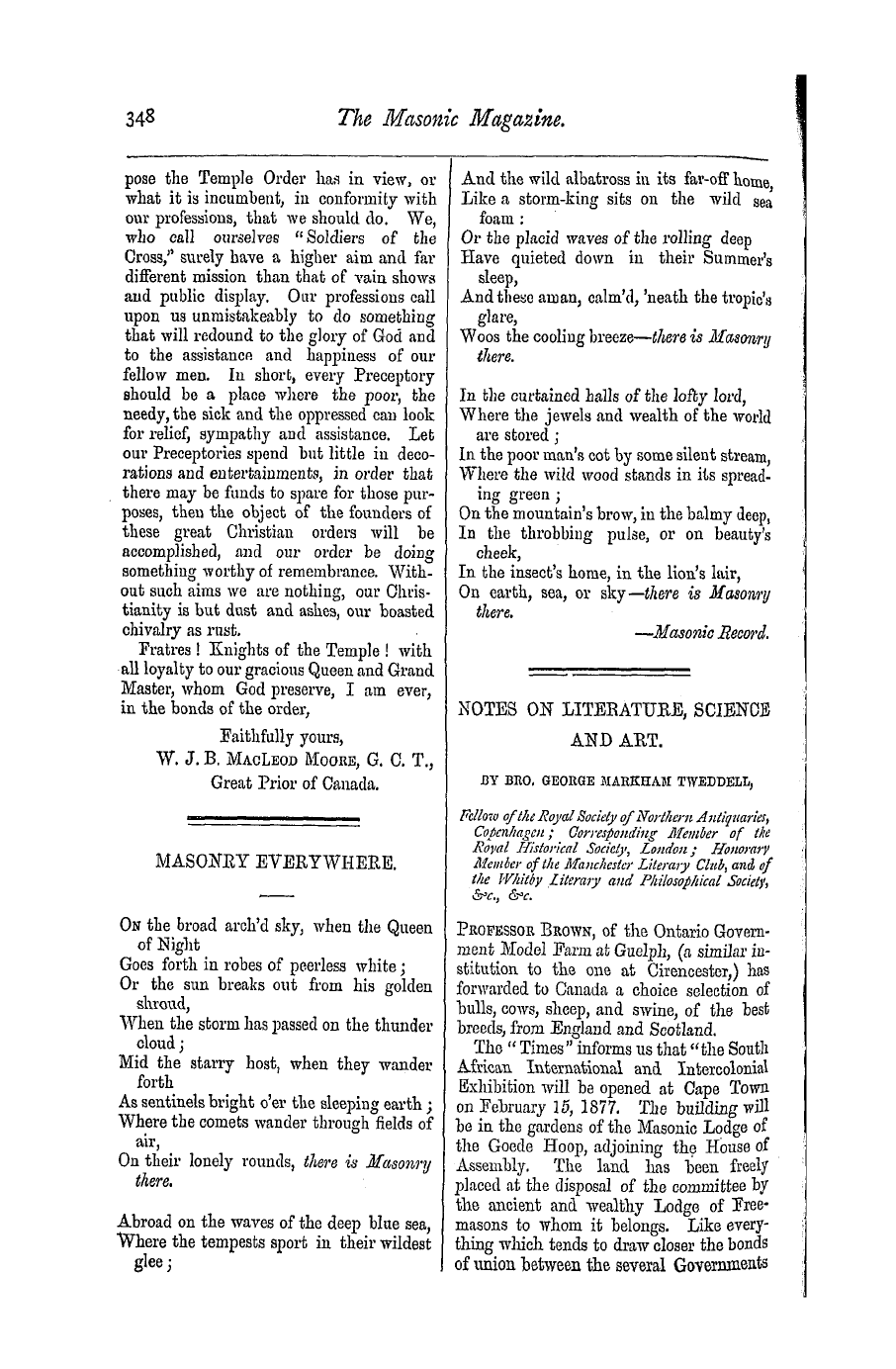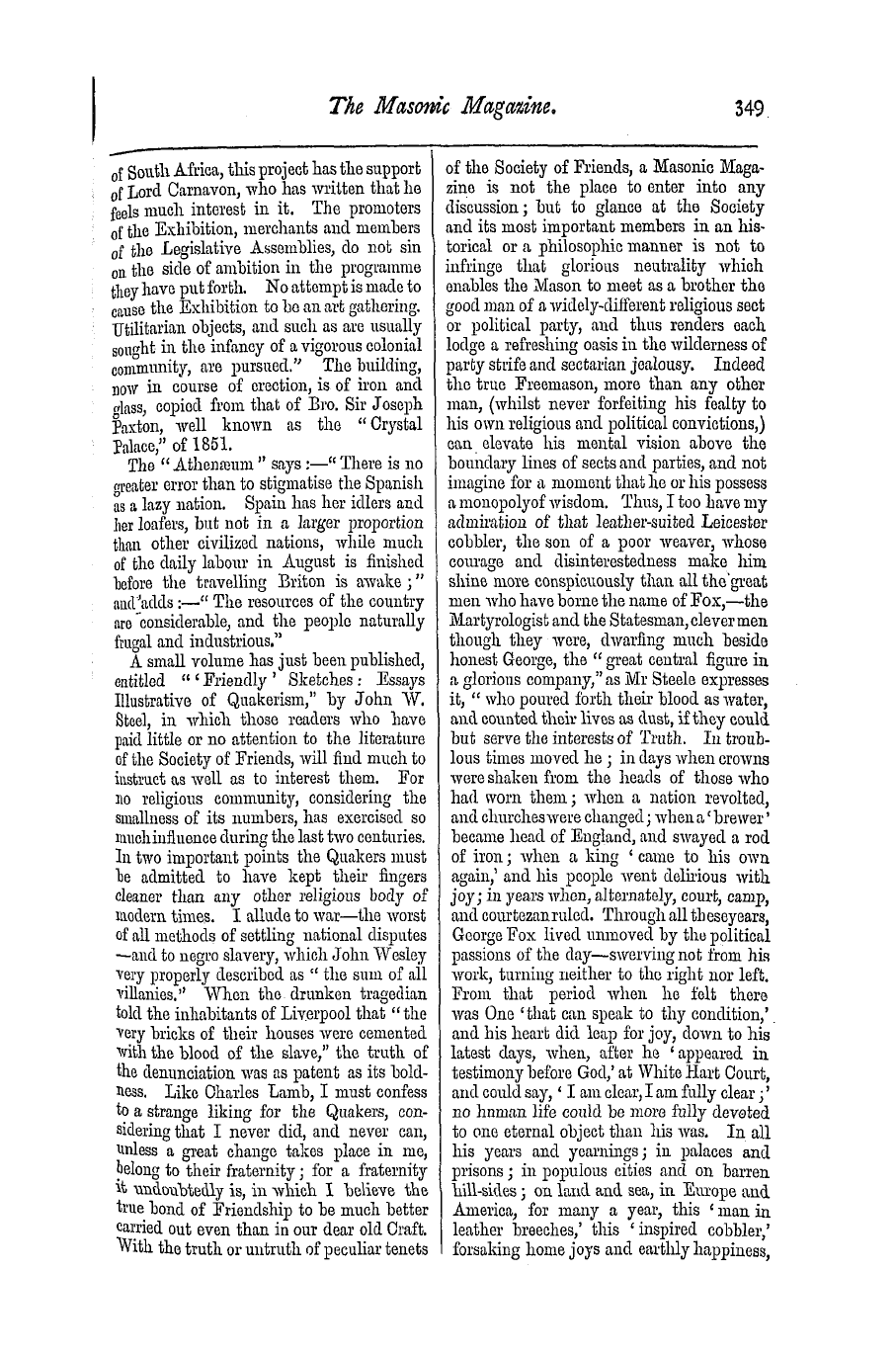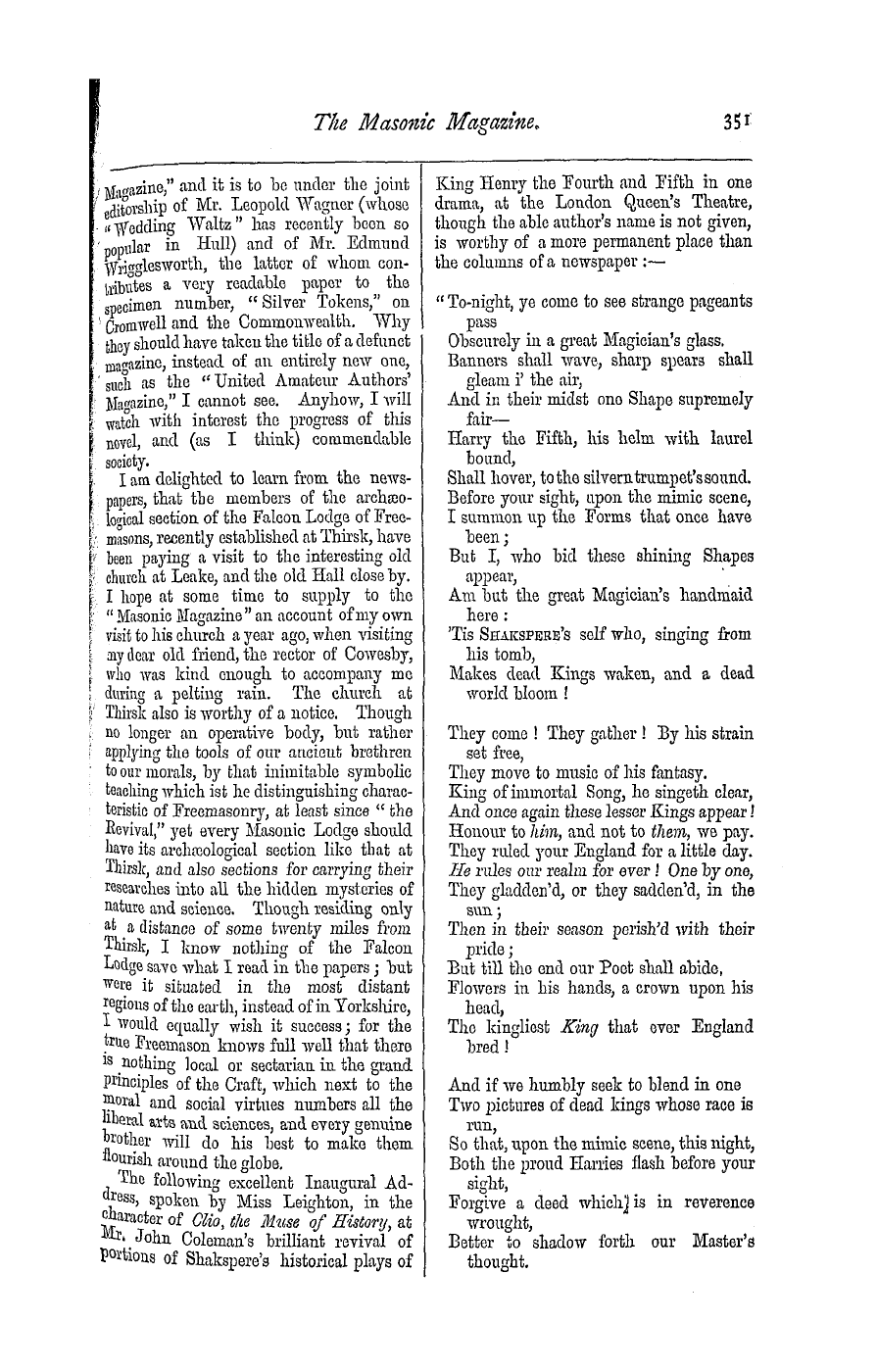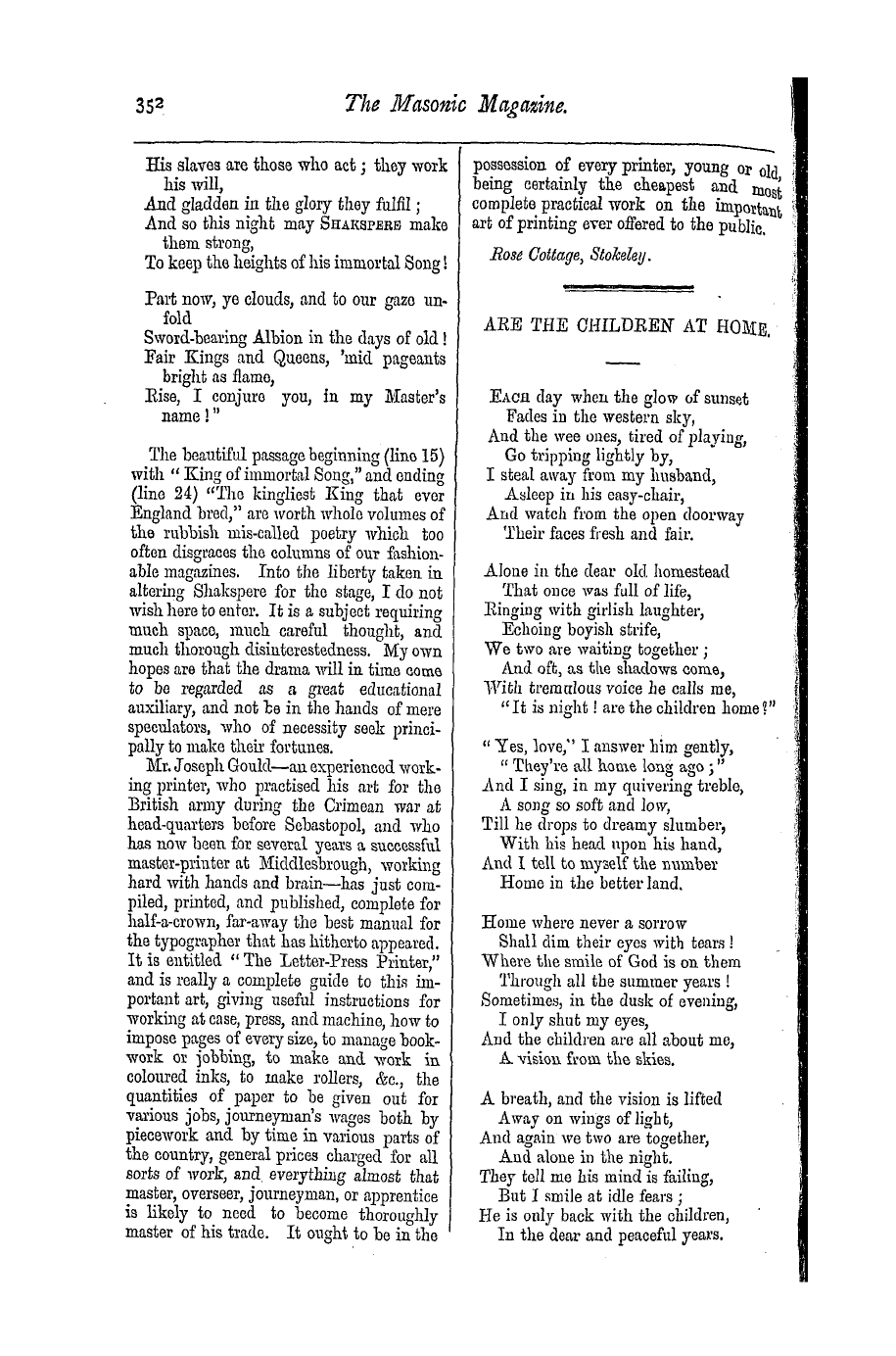Note: This text has been automatically extracted via Optical Character Recognition (OCR) software.
Address Of The V. H. And E. Sir Kt. Col. W. J. B. Macleod Moore, Of The Grand Cross Of The Temple, Grand Prior Of The Dominion Of Canada,
affairs , 1 never allowed expediency to stand in the way , being determined , if possible , to ensure the order being placed upon a firm basis and its future status permanently secured . It mav not be quite clear to some of our
fratres why we should still wish to continue under the " Convent General , " but I need scarcely point out to you that , as a National British Society , no more honourable position could be held than that of being united with the other national
branches of the order over whom H . R . H ., the heir-apparent to the throne , is governing power , and which Her Most Gracious Majesty the Queen has been pleased especially to patronize . This I look upon alone as a great distinction and
privilege , the countenance of Her Majesty being a guarantee of the purity , thorough conservative doctrines , the Christian principles of our order . The avowed object of this Templar Union was to incorporate the branches of EnglandIrelandand Scotland under one
, , Royal head , by the reciprocation of rites , privileges , and disabilities , as , correctly speaking , there should not be any separate bodies in the society , which is or should be one and indissoluble , although want of knowledge of the correct principles of the
order in some cases , and political exigencies in others , have divided it into several branches , holding themselves entirely independent of each other . The desire isnow to unite the scattered elements of this
ancient chivalry into one harmonious whole , as was originally the rule of the order . The formation of a " Convent General " and " Great Priories " is nearly analogous to the system pursued in the United States , their State G ' ommanderies being similar to the National Great Priories of
the British Empire . These Commanderies yield submission to the triennial parliament of the order , the Grand Encampment of the United States , which is very similar in constitution and authority to our " Convent General . "
Our joining this Templar Union does not at all interfere with our independence as a Canadian body or our privilege to regulate our own affairs , and at the same time carries out the principle , so necessary to inculcate , of unity in the order .
It is to be regretted that the Scottish branch of the order did not join the Union , and much to be deplored that this was mainly caused by a misconception of their commissioner appointed to effect the same , who , little understanding the
subject upon which he was appointed to legislate , allowed his prejudices to i gnore from the very commencement of the negotiation the benefits to be derived from the proposed union , and by a disregard for existing treaties of alliance with the
English branch , appear even disrespectful to H . R . H . the Urand Master , thus debarring the very few encampments or Priories existing under Scottish jurisdiction from participating in a union so much in their favour and to their advantage .
With respect to the United States branch of the order , the advances made by England towards an alliance have been so far unsatisfactory , inasmuch as the peculiar Templar system adopted by them does not assimilate with ours . The ori ginators of
that system chose to found it altogether upon Craft Alasonry , and the two are so connected in the United States that it would appear that they cannot be
separated by any one who has received these orders there ; and , being thus incorporated with Freemasonry , they can hardly amalgamate with a Templar system that is not equally so . They have made the Order of the Temple emphatically a
degree of Masonic knighthood b y adopting the obsolete and , in our opinion , mistaken theory that the Chivalric Order of the Temple was based on the Craft degrees as now practised , there being in fact nothing whatever in the history of the early order
to warrant us in believing that up to the time of its outward suppression there was any particular alliance between it and Freemasonry . Of course individual Knights may have been , and probably wereFreemasonsand naturallywhen
, , , assailed and opposed by their implacable enemies , took refuge within the pale of the Craft , but previous to this time the Order of the Temple as an order , was not allied to Freemasonry at all . But the principal stumbling-block was their insisting
that their degree of " Knig hts of the Red Cross ( derived from the 16 ° of the A . and A . S . Rite , and generally known in Great Britain and Ireland as the Red Cross of
Note: This text has been automatically extracted via Optical Character Recognition (OCR) software.
Address Of The V. H. And E. Sir Kt. Col. W. J. B. Macleod Moore, Of The Grand Cross Of The Temple, Grand Prior Of The Dominion Of Canada,
affairs , 1 never allowed expediency to stand in the way , being determined , if possible , to ensure the order being placed upon a firm basis and its future status permanently secured . It mav not be quite clear to some of our
fratres why we should still wish to continue under the " Convent General , " but I need scarcely point out to you that , as a National British Society , no more honourable position could be held than that of being united with the other national
branches of the order over whom H . R . H ., the heir-apparent to the throne , is governing power , and which Her Most Gracious Majesty the Queen has been pleased especially to patronize . This I look upon alone as a great distinction and
privilege , the countenance of Her Majesty being a guarantee of the purity , thorough conservative doctrines , the Christian principles of our order . The avowed object of this Templar Union was to incorporate the branches of EnglandIrelandand Scotland under one
, , Royal head , by the reciprocation of rites , privileges , and disabilities , as , correctly speaking , there should not be any separate bodies in the society , which is or should be one and indissoluble , although want of knowledge of the correct principles of the
order in some cases , and political exigencies in others , have divided it into several branches , holding themselves entirely independent of each other . The desire isnow to unite the scattered elements of this
ancient chivalry into one harmonious whole , as was originally the rule of the order . The formation of a " Convent General " and " Great Priories " is nearly analogous to the system pursued in the United States , their State G ' ommanderies being similar to the National Great Priories of
the British Empire . These Commanderies yield submission to the triennial parliament of the order , the Grand Encampment of the United States , which is very similar in constitution and authority to our " Convent General . "
Our joining this Templar Union does not at all interfere with our independence as a Canadian body or our privilege to regulate our own affairs , and at the same time carries out the principle , so necessary to inculcate , of unity in the order .
It is to be regretted that the Scottish branch of the order did not join the Union , and much to be deplored that this was mainly caused by a misconception of their commissioner appointed to effect the same , who , little understanding the
subject upon which he was appointed to legislate , allowed his prejudices to i gnore from the very commencement of the negotiation the benefits to be derived from the proposed union , and by a disregard for existing treaties of alliance with the
English branch , appear even disrespectful to H . R . H . the Urand Master , thus debarring the very few encampments or Priories existing under Scottish jurisdiction from participating in a union so much in their favour and to their advantage .
With respect to the United States branch of the order , the advances made by England towards an alliance have been so far unsatisfactory , inasmuch as the peculiar Templar system adopted by them does not assimilate with ours . The ori ginators of
that system chose to found it altogether upon Craft Alasonry , and the two are so connected in the United States that it would appear that they cannot be
separated by any one who has received these orders there ; and , being thus incorporated with Freemasonry , they can hardly amalgamate with a Templar system that is not equally so . They have made the Order of the Temple emphatically a
degree of Masonic knighthood b y adopting the obsolete and , in our opinion , mistaken theory that the Chivalric Order of the Temple was based on the Craft degrees as now practised , there being in fact nothing whatever in the history of the early order
to warrant us in believing that up to the time of its outward suppression there was any particular alliance between it and Freemasonry . Of course individual Knights may have been , and probably wereFreemasonsand naturallywhen
, , , assailed and opposed by their implacable enemies , took refuge within the pale of the Craft , but previous to this time the Order of the Temple as an order , was not allied to Freemasonry at all . But the principal stumbling-block was their insisting
that their degree of " Knig hts of the Red Cross ( derived from the 16 ° of the A . and A . S . Rite , and generally known in Great Britain and Ireland as the Red Cross of































































